Manika bids Oz farewell




FREE DECEMBER 2017 • info@indianlink.com.au • www.indianlink.com.au MELBOURNE WINNER OF 20 MULTICULTURAL MEDIA AWARDS





















































































































































DECEMBER www.indianlink.com.au $30 Recharge Prepaid Ultimate Plus 10GB + 10GB extra to stream on 3GB + 7GB bonus First recharge of $30 or more for new customers by 04/02/18 All for use in Australia within 28 days. Fair Go Policy applies. Bonus data: Includes $30, $40 and $50 SIM Starter Kits. Bonus data may take up to 72 hours to be applied and will expire at the same time as that recharge unless data rollover applies. Excludes SIM swaps. Bonus data is available as a once off and is not available on subsequent recharges of any eligible value. Not to be used in conjunction with any other offer. Limit of once per customer. Video Streaming: Expires within 28 days or upon next recharge, whichever is earlier. Streaming services subject to change and may require paid subscriptions. Content such as ads, authentication and app analytics are excluded and will be deducted from any standard or bonus MyData allowances you have. Streaming services may not have apps available on all mobile operating systems. Tethering and downloads not permitted. Indian Link_Nov 30 Streaming Advert P_30 Hero Streaming Ultimate Plus_250x358mm.indd 1 26/10/2017 10:24:28 AM















DECEMBER INDIAN LINK
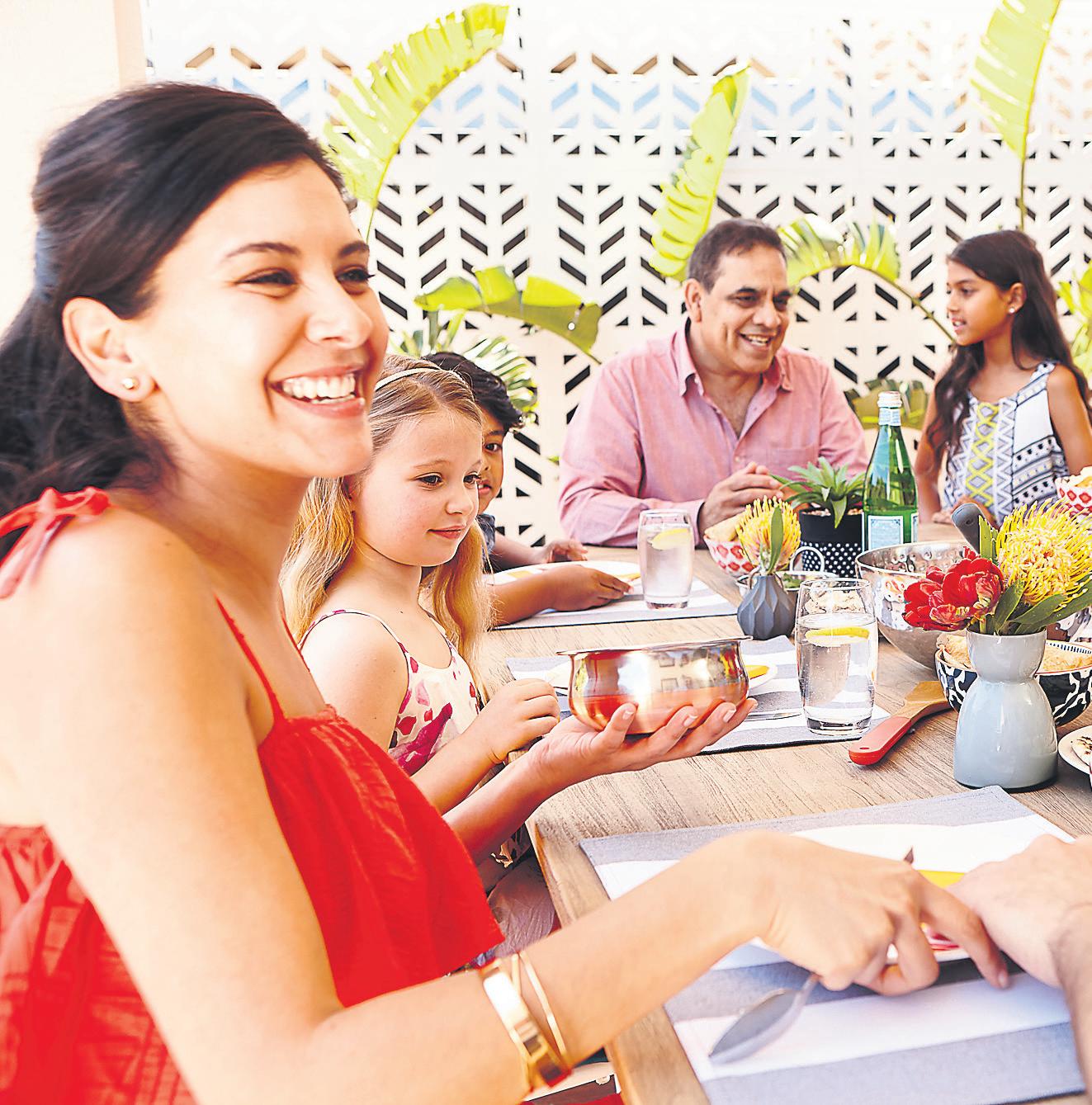

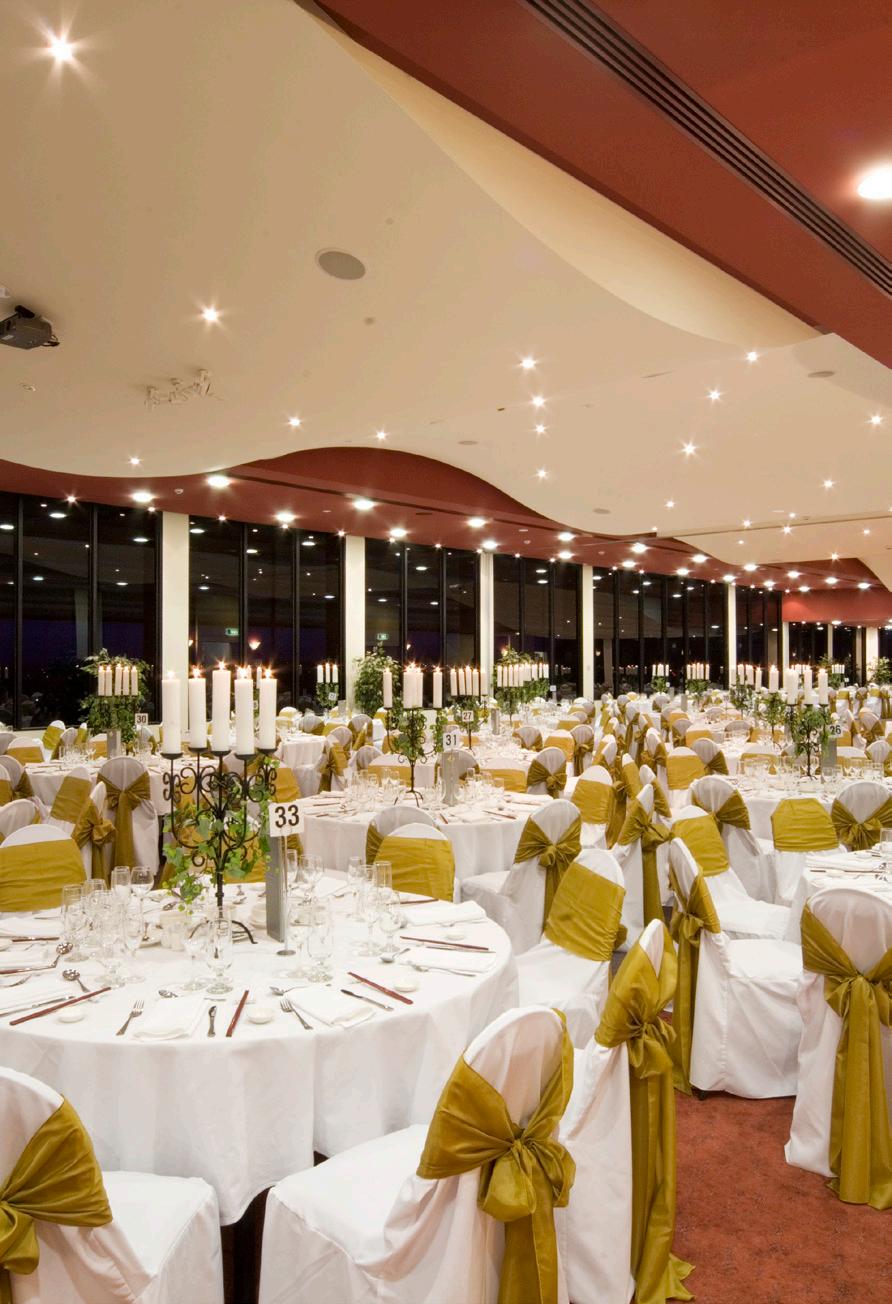

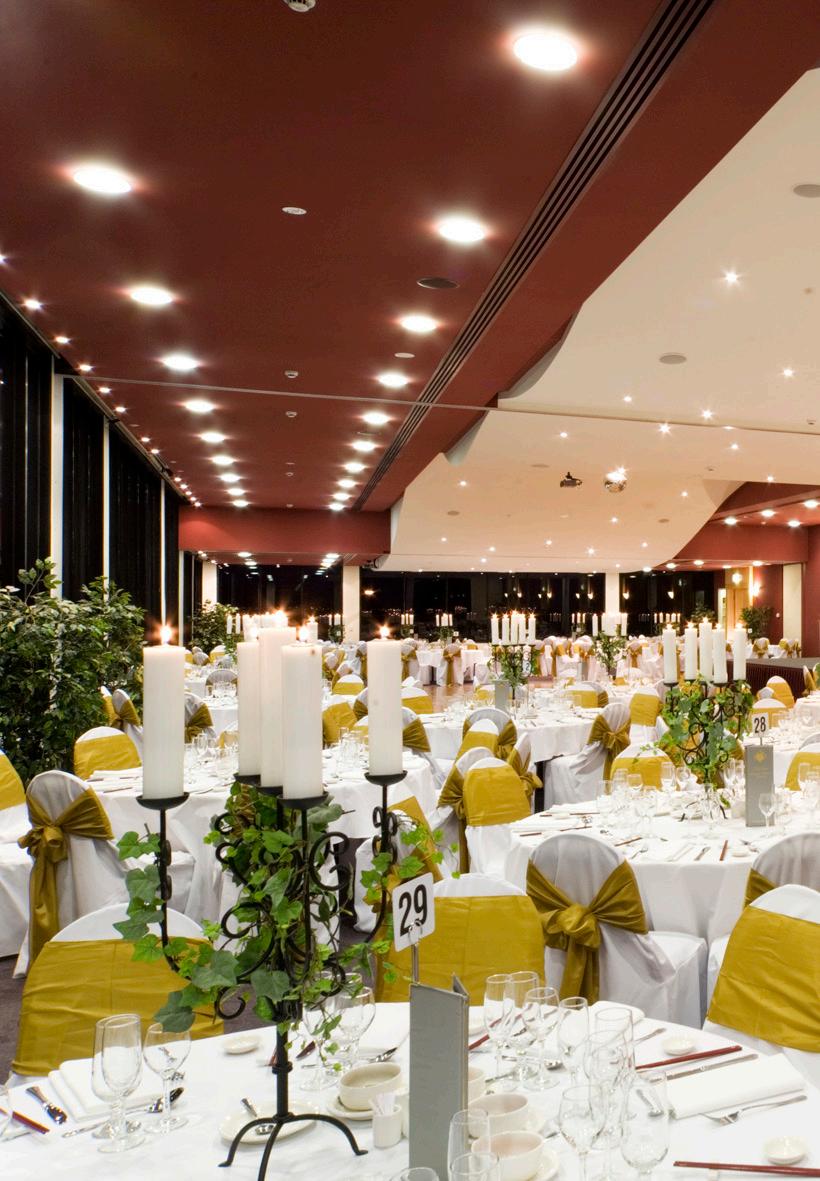
DECEMBER www.indianlink.com.au A NEW BEGINNING A new home is just the start. Newhaven is the opportunity to build your future in a close-knit, friendly community in Tarneit’s best location. Discover new friends, a new community, and a new way of life. Newhaven, feels like home. newhaventarneit.com.au Visit the Sales and Information Centre, 830 Leakes Road, Tarneit. Peet Estates (VIC) Pty Ltd PEET1585_170x250_Newhaven_Indian Link_FP_FA.indd 1 16/10/2017 3:40 PM Mfc Manningha m FUNCTION CENTRE on Doncaster Hill Manningham Function Centre specialises in weddings and social functions. • All inclusive packages • Indian banquet • Large dance floor • Convenient location (ample free parking) • Spectacular views Manningham Function Centre 699 Doncaster Road (PO Box 1), Doncaster Victoria 3108 p 03 9840 9375 e enquiriesmfc@manningham.vic.gov.au www.manninghamfunctioncentre.com
INDIAN LINK
PUBLISHER
Pawan Luthra
EDITOR
Rajni Anand Luthra ASSISTANT EDITOR
Harshad Pandharipande
MELBOURNE COORDINATOR

Preeti Jabbal
CONTRIBUTORS
Aneeta Menon, Carl Buhariwala, Tarini Puri, Ritam Mitra, Aparna Ananthuni, Dipanjali Rao, Saroni Roy, Saket Suman, Priyanka Tater, Vandana G, Auntyji
ADVERTISING
Victorian Sales Manager Varun Pal 0490 705 729
National Sales
Vivek Trivedi 0410 578 146
ADVERTISING ASSISTANT
Charuta Joshi 02 9279 2004

Indian Link is
How not to organise a public protest
BY RAJNI ANAND LUTHRA
Let’s get this straight: citizens in a democracy have the right to air their grievances and be heard by relevant authorities (example Section 17 of the Australian Constitution and Article 19 of the Indian Constitution).
But the Indian community in Australia have been shocked this month at an unseemly protest targeted at the Indian High Commissioner Dr AM Gondane in Melbourne. That the unfortunate incident occurred at a place of worship was even more dismaying.
The episode, which took place at Gurudwara Saheb Tarneit at Melbourne on 18 November, was captured on a video which has now gone viral.
It shows the High Commissioner cornered at the entrance to the Gurudwara and shouted at by a group of men scrambling over each other, and raising slogans. Dr Gondane heard them out patiently and tried to pacify
Punjab earlier this month. It appears that no prior representations about the grievance were made to the High Commission by the protesting group.
In a dignified response, the High Commissioner downplayed the issue but clarified that his office is open to hearing complaints from Indian citizens living here.
So, how should you lodge a protest with the Indian High Commission if you have a grievance? You can write to the High Commission, email them or contact via social media. Indian missions also accept complaints in person.
If you want to do it personally, it’s best to check first. Missions will determine which officer you could talk to, based on the nature of your complaint.

Gondane said that unlike many other missions, the Indian mission is not closely guarded at the gates. So, small groups are welcome into the office, but for larger groups, the High Commissioner or someone representing him can come out and meet them.
In the recent past the High Commission and the Consulates have dealt with grievances of all kinds brought in by citizens.
Only recently there have been
Bengal, for instance. These are passed on to the relevant Indian authorities and departments and the High Commissioner takes pains to follow up.
If it is a grievance that can be sorted out here such as with VFS, for example, it can be looked into straight away.


If you do want to take your protest up to a higher level such as organising a picket or a march or a rally - and you have the right to - remember there are procedures that need to be followed. These include lodging a complaint first up, and letting the authorities know beforehand. And perhaps, picking one of your group as lead communicator, and trying not to ambush a government official at out-of-office hours.
Placards? Sure. Use them to raise awareness with the general public. Make them catchy; come up with a slogan if you want. But a large, wordy placardwritten in Punjabi - brandished outside the Indian Consulate on St Kilda Road, might not exactly cut it.
Just like a procession of fast cars revving up outside the Indian Consulate on Castlereagh St in Sydney’s CBD on India’s Independence Day.
So, feel free to protest if you feel strongly about an issue as long as - and we’ll let Dr Gondane have the last word here - “civil decency is maintained throughout.”
DECEMBER INDIAN LINK
editorial
a fortnightly newspaper published in English. No material, including advertisements designed by Indian Link, may be reproduced in part or in whole without the wri en consent of the editor. Opinions carried in Indian Link are those of the writers and not necessarily endorsed by Indian Link. All correspondence should be addressed to Indian Link Level 24/44 Market St, Sydney 2000 or GPO Box 108, Sydney 2001 Ph: 02 9279-2004 Fax: 02 9279-2005 Email: info@indianlink.com.au Cover pic: AP Guruswamy
Leaving the quality of the construction and finish in your new home to the very people who are deriving a profit from constructing it can be a recipe for disappointment New Home Inspections have been assisting new home owners achieve their dreams and get the quality they are paying for since 2000 Who's looking after the quality of the construction in your new home? Receive a $50:00 discount off your first inspection by sending us a copy of this ad Ph: 1300 no defects Ph: 1300 66 3333 Web Site:www.newhomeinspections.com.au Email: info@newhomeinspections.com.au
2017 at a Glance
Australia has remained a shining attraction for many aspiring migrants in 2017. The demand to call Australia home, remained strong despite the uncertainties underpinning the legal environment. Some of the key developments in 2017 include; the announcement of a new Home Affairs Ministry which would be responsible for multiple areas including immigration, changes to the 457 Scheme, the proposed changes to citizenship laws and simplification of Australia’s entire visa system. These changes are only mere examples of key developments and are in no way exhaustive.




The Government announced in July 2017 that a new Home Affairs Ministry would be established and that the current Minister for Immigration, the Hon. Peter Dutton, would become its head. The new Ministry would assume responsibility for immigration, border control, national security and law enforcement. The details of this very significant change remain in need of clarification. Many remain concerned as to whether the immigration portfolio will receive appropriate resourcing within the new super Ministry. Given the current issues with delays in processing applications, many stakeholders are curious as to whether the immigration portfolio will be a ‘winner’ in this overhaul.

The proposed changes to the 457 Scheme, including its complete abolishment by March 2018, remains a divisive issue. Accordingly, the 457 Scheme received significant media attention throughout the year. With changes being rolled out at various intervals, the evolving nature of the 457 Scheme has caused uncertainty for many stakeholders. Although, initial changes to the 457 Scheme were perceived by many as being abrupt,
subsequent changes have been less controversial and even welcomed by some stakeholders.

The proposed amendments to Australian citizenship law were dramatically defeated in the Australian senate when it became apparent that the proposal would not receive the necessary support. In what was heralded by various groups as a historic win for multicultural Australia, the Government flagged that the matter was not settled and that a further attempt to modify the existing laws would be on the table in due course. The irony of the aforementioned, perhaps lies in the political backdrop, whereby an unprecedented dual citizenship crisis continues to wreak havoc in Canberra.
Earlier this year, the Department of Immigration and Border Protection initiated a consultation process with the public seeking input into simplifying Australia’s entire visa system. The Department is currently considering whether it is feasible and indeed favourable to reduce the number of visas from around 100 visas to around 10. Another important term of reference underpinning the consultation is whether permanent residence should only be granted to those who have held provisional residency. This is currently not the case for many visas.
Overall, the immigration landscape in Australia has faced many challenges in 2017. Despite these multi-dimensional challenges, Australia remains a great attraction for aspiring migrants. The 2018 year is now around the corner. In the new year, those who are well informed and adaptive to the challenges they face within the immigration landscape, are in a prime position to actualise their dreams. For those who remain unaware of the dynamic immigration environment, uncertain times await.

DECEMBER www.indianlink.com.au Outgoing Consul General of India looks back at her tenure 12 36 26 21 Indian Link 12 COVER STORY SPECIAL FEATURES Indian Link LINKING INDIA WITH AUSTRALIA TRAVEL Holidaying with a toddler: Dos and Don’ts 12 MAINSTREAM Same sex marriage survey: Gay community speaks 18 SENIORS Same sex marriage survey: Gay community speaks
COMMUNITY VMC’s Multicultural Awards for Excellence 2017 26 21 SPORT Jason Sangha: Cricket prodigy 36
CONTENTS
LEVEL 35/600 LITTLE BOURKE ST, MELBOURNE VIC 3000 PHONE (03) 8639 5520 info@rhodescetin.com.au / www.rhodescetin.com.au
Sidar Cetin is the Principal Solicitor of Rhodes & Cetin Lawyers. He is also a Registered Migration Agent (1465685)
Note: No part of the herein article was intended by the writer to constitute personal legal and/or immigration advice.









DECEMBER INDIAN LINK 26th Dec-2017 to 2nd Jan-2018 ONCE A YEAR NOT TO BE MISSED ASHWOOD 382 Warrigal Road 9885 9932 DANDENONG 23 Pultney Street 9701 3165 PRESTON 258 High Street 9416 9011 St ALBANS 280 Main Road East 9366 4141 www.mks.net.au WE BEAT ANYONE'S PRICES MEGa BOXING day NEW YEAR SALE MEGa BOXING day NEW YEAR SALE
YOUR SAY
NOT QUITE A ‘DEMON’?
APARAJITA GUPTA’s piece questioning the ef cacy of India’s demonetisation drew some sharp reactions
Raghbjha wrote: This is a highly one-sided article that chooses to portray what it wants to portray and ignores the rest. So, all the data on the amount of suspicious deposits in some bank accounts, the number of shell companies closed, the ease of passage to the GST and many others are all irrelevant, according to the author of this article. Also, the article chooses to ignore the fact that the government prepared the economy for the demonetisation through opening up of Jan Dhan accounts and giving tax dodgers a chance to come clean. All this happened before demonetisation. The appropriate counterfactual for assessing the impact on economic growth is what the growth would have been had there been no demonetisation - not the actual rate of economic growth. In any case, growth picked up after one quarter of decline. Future growth will be faster, cleaner and more sustainable and inclusive.


Prakash Mehta wrote: This is a biased article on demonetisation in India due to many reasons. First, ordinary people had several opportunities to open up bank accounts (including Jan Dhan accounts) in which they could deposit their old currency notes. Second, those who had dodged taxes were given a generous opportunity to come clean, declare their assets, pay their dues and become part of the legitimate economy. Hence, the only people whose wealth positions were adversely affected by demonetisation were the dishonest. Others were affected only temporarily and to the extent that they had to stand in queue to withdraw cash and/or deposit money. Second, black money in the Indian economy has come down substantially. More than 300,000 shell companies that were being used for money laundering have been closed. Hundreds of thousands of suspicious deposits into bank accounts have been identi ed and will be pursued. A strong benami law and a regulatory authority for real estate are functional. Third, the tax base of the economy has gone up sharply as numbers of both direct and indirect tax payers have gone up. This will enable the government to spend more on health, education and infrastructure, among other things. Fourth, digitisation of the economy has rapidly expanded. Fifth, the shrinking of the informal economy has meant that the country could adopt the GST which has led to the creation of a uni ed Indian market for the rst time since Independence.

HIGH COMMISSIONER FACES ANGER
The Indian diplomat was cornered at a Melbourne gurdwara recently. The video got some sharp reactions
Ashish Chawla wrote: This is a disgrace on the way they speak to a high commissioner Varun Pal wrote: I found it appalling to say the least. Surely, there are better ways to put your point forward. Respect the high commissioner. There are channels through which you can raise the issues. Slogans towards the end was uncalled for as well.
INDIAN TEEN WITH DISABILITY WINS AWARD

DHANYA SAMUEL wrote about the inspiring story of how young Mark Alvares put aside his challenges and embraced life.
Mythili Iyer applauded: Kudos to Mark Alvares for his resilience and positivity. May he nd more success in his new challenges ahead.
Jayanthi Vellore said: Well done Mark! You have been an inspiration to all of us.
Nick Hatzis wrote: Well done Mark!
THE LABOUR PAINS OF ADOPTION
Liz and Adam Brook haven’t been able to adopt a child from India, thanks to a freeze on inter-country adoption, wrote RITAM MITRA

A reader wishing to stay anonymous wrote: When we passed through the phase of adoption, no one can understand what we went through every moment, waiting for a phone call, snubbed off rudely by both Australian and Indian red tape and bureaucracy…tears, trials and tribulations. I feel very happy that Ritam has put all this together. I feel so privileged that by a very thin line, we have our daughter in our lives. We feel grateful and must have done some little good in the past or present to be able to have her in our lives, but equally we feel helpless for others who are victims of this limbo. A big heartfelt congratulations to Ritam for working on this bit which is so close to my heart, and hope it will be valuable information for all wishing to go down that line for starting a family.
Rajni Luthra commented: Wishing you all the best in your quest, Liz and Adam. Liz Brook shared the article in her network and received plenty of encouragement


Yan Hope wrote: Good things come to those who wait (And wait. And wait…) Michelle Forbes wrote: I will keep my ngers crossed for you both. Sending love and hugs your way.
Elaine Brook wrote: Never give up! There must be someone in the authority who could help your cause. Thank you Liz and Adam for putting it out there. All the best. Hope you succeed before too long.
Jessical McNeill wrote: Such a sh**ty situation. Hope this story goes a long way in raising awareness and driving change.
TWO PRESIDENTS AND A PM
PAWAN LUTHRA wrote that of the three world leaders closely watched by the Indian diaspora, only one - China’s Xi Jinping - seems to have a vision Sudarshan Narayana wrote: The editorial titled ‘Two Presidents & a PM’ is a very sensible write-up, summing up the prevailing leadership role in major three nations around the globe. I couldn’t stop myself from writing this mail to express my feelings immediately after reading it.

Chandra Kishore said: Only Modi and Xi could be taken seriously.
Debbie Purtell wrote: Thanks to Indian Link. A good, informative article. Nisha Prichard wrote: Great awareness raising. Keeping ngers crossed for you guys. + JOIN
> LOG on to your own Facebook or Twitter account
> TYPE “Indian Link” into the search box at the top of the screen and click on the link that comes up
> CLICK ‘Like’ to join the Indian Link Facebook community or ‘Follow’ @Indian_Link on Twitter


DECEMBER www.indianlink.com.au
THE CONVERSATION
The Australian Government is investing more funding in child care through the new Child Care Package. Look out for more information on what you need to do to prepare for the changes in early 2018. For more information visit: education.gov.au/childcare



























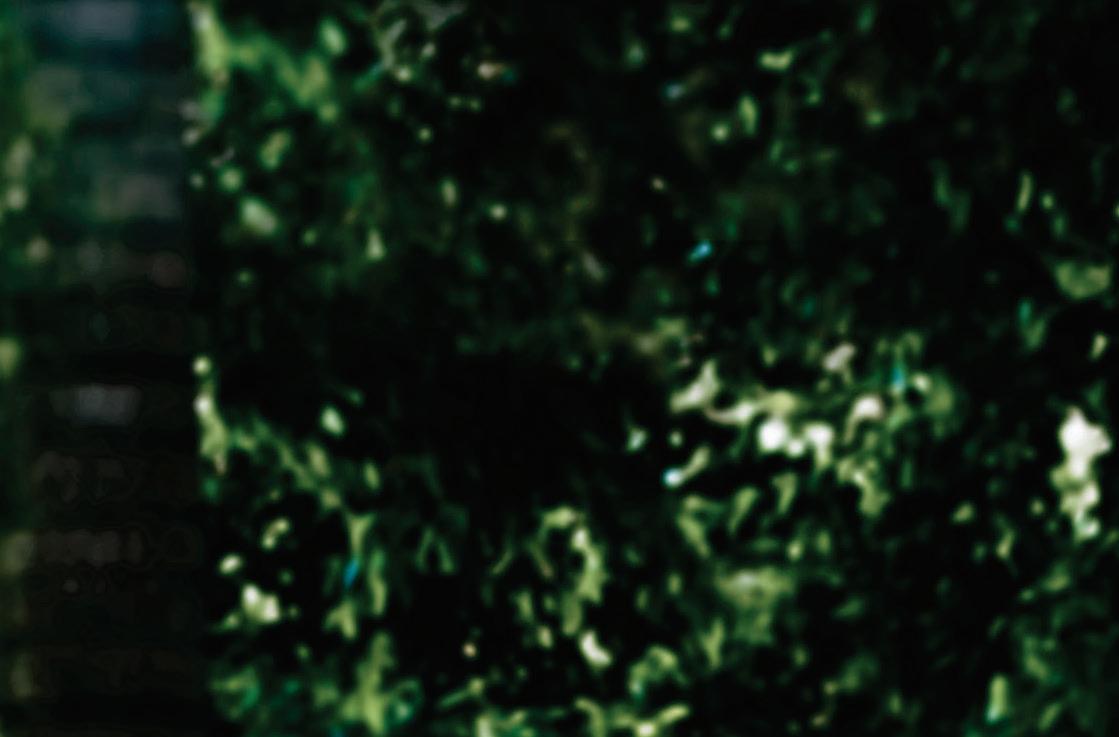




DECEMBER INDIAN LINK Authorised
the
Government,
ADVERTISEMENT MORE SUPPORT FOR MORE FAMILIES
by
Australian
Capital Hill, Canberra.
the easy online estimator to
out what
means for
family
One
The New Child Care Package Changes to the annual cap will make child care more affordable for most families. Use
find
it
your
education.gov.au/childcare The new package will help parents with children aged 0–13 to work, train, study or volunteer.
new Child Care Subsidy replaces the two current child care payments. Starts 2July2018. Child Care Safety Net to help disadvantaged families and children with additional needs.

‘‘ ‘‘
I feel we could have done a lot more in the improvement of economics and trade. I am not very happy with the progress there
Ind-Oz ties better but trade lags
As the community bids a fond farewell to Manika Jain, Consul General of India (Melbourne), she casts a look back at her experiences in Australia. Ms Jain will take up her new position as India’s Ambassador to the Kingdom of Cambodia shortly.
BY PREETI JABBAL
PREETI JABBAL : What significant changes have you seen in IndiaAustralia engagement since taking up your position as Consul General?
MANIKA JAIN: The energy, security and renewable energy dialogues have been good and the relationships there are robust. The defence arrangement has further deepened and widened between the two nations and we now have more military exercises on naval vessels. Movement is also strong in strategic space and intelligence sharing. Solar alliances are another area where we have moved ahead. We are also forging mutual relationships in culture, education, agriculture and sports through ministerial visits, delegations and memoranda of understanding. Besides trade and economics, where progress may not be as visible as expected, the engagement is improving in almost all other sectors.
PJ: How much of your ‘to do’ list have you been able to accomplish? What was left unfinished?
MJ: Diplomacy by nature is not that quantitative and our goals are more intangible. I will be satisfied to say that as a team, we have been able to establish better accessibility at the Consulate. When I started, I was told that only a limited number of people approached the Consul or exchanged ideas and feedback, whereas now we engage with a large cross-section of people. The feedback and engagement helps us to understand the needs of the community and the wider community remains on our radar. Previously, the Indian cultural space was limited to the diaspora community. We have now been able to take the dialogue, performances etc. out to the mainstream. On the other hand, I feel we could have done a lot more in the improvement of economics and trade. I am not very happy with the progress there.
PJ: During your welcome interview in 2013, you pointed out that trade with India was 1/8th of the total trade in Victoria. How has that situation progressed over time?
MJ: The trade figures that I mentioned earlier were specifically related to trading in merchandise and they don’t seem
have progressed much. My stay here has made me understand that the potential is more for trade in services rather than merchandise. For example, the Education and Tourism sectors have progressed quite satisfactorily in Victoria. In 2016, the number of students from India was 34,347. The 2017, the figures are yet to be released but, according to guestimate, there has been a definite increase as enrolments are consistently rising in high numbers. In 2008-2010, when the graph was high, students were enrolling largely in vocational sectors but the current trend is of increased enrolments in all sectors in Victoria, especially in universities.
The enrolment is across the board and indicates that students have started seeing Australia as a serious destination for tertiary education. Similarly, in the last few years, various universities in Australia have engaged with Indian organisations through collaborations with research bringing talent at postdoctoral level. Cutting edge research is being conducted that involves Indian and Australian industries and we can see benefits of commercialisation of those researches very soon. This should increase further the trade, investment and two-way engagement between India and Australia. Tourist movement on both sides has also improved positively.
PJ: Regarding cultural engagement, Confluence 2017 does not seem to have the same fanfare or pull as last year.
MJ: Confluence 2016 was a mandate of the Indian Government as part of the commitment that Prime Minister Modi made during his visit to Australia. It was held under the aegis of Ministry of Culture, HCI, ICCR etc. It was fully supported and largely financed by the Indian Government as a one-time commitment. We were hoping to continue with the assistance of other players, supporters and major sponsors. This year’s Confluence was not possible on that grand scale. Subsequent festivals will depend on how the team can generate finances. Hopefully with partnerships, it will continue even if at a smaller scale.
PJ: What according to you is the biggest cultural difference between Australians and Indians?
MJ: This is not to criticise any particular type of system, however, I feel there is a difference in the work culture of the two places. Australians are very processdriven whereas in India we seem to have a different work culture. I like to think we are more outcomes-driven.
PJ: What can the diaspora in Melbourne do for India?
MJ: Indians everywhere are very entrepreneurial. links with India helps to strengthen the relationship. Many may intend to be involved further but the larger diaspora here is made up of relatively new migrants and our second generation has yet to reach its full potential. If they are able to connect to their roots or their parents’ roots, it will take this relationship forward.
The Indian Government also has initiatives like Know India Programme for diaspora engagement that helps Indian origin youth to enhance their awareness about India. In order to contribute, they need to know about the country’s progress from a destination for culture, heritage and art to an emerging powerful economy in the world.
PJ: One of the biggest issues we face within our community is fragmentation based on affiliations, regions or religion. Where do you think we are in terms of unity and strength in numbers?
MJ: Fragmentation of the Indian diaspora is not new. We have diversity within India that is reflected in the large variety of Indian organisations. It’s a great thing to group together and have a platform to celebrate festivals, languages, affinities and cultural identities. What does not help is to become insular in those identities as that does not benefit the Indian diaspora as a whole. I have tried to address this concern whilst engaging with various organisations. I find that they do understand that there is an issue with divisiveness. Hopefully, they will work towards more cohesion in future.

PJ: When you started, you also observed social issues with Indian migrant women and communicated the need
to address them through consultation, strategy and action. How have you been able to make a difference during your time here?
MJ: When I came in, lots of organisations of women met me and flagged issues of domestic violence and other social problems that women were facing here. I realised these were not issues unique to Indians but to the larger community as well. After the Rosie Batty incident, a Royal Commission was also conducted to address the scale and impact of this crime in Victoria. There are good legal and social structures in Victoria to address these issues and all women could get relief under that framework. The requirement, however, was to create the awareness of these legislative frameworks amongst Indians. We worked out a strategy in Delhi where we handed over booklets that guided people on how to seek help. We worked with the Indian Ministry to make this information available through whatever sources we could. I have always had candid interactions with ministers, diaspora and universities over this subject. At the Consulate, we have also assisted people in individual capacity if the community or organisations were unable to help.
There is still a lot to be done to reach out to women who are vulnerable, have language barriers, or limited access to information. The community and media can help us in dissemination of that information.
PJ: What lies ahead for you?
MJ: I am looking forward to Cambodia and excited about going back to the ASEAN area to do some diplomatic work. I have lived and worked in ASEAN countries and I quite like the region. The challenge would be to get into the groove. I am going from an open democratic society to a different society and the working style would be different.
On a personal note, I may be separated from my daughter for the first time as she completes her university education elsewhere. So I am going there with mixed feelings.
PJ: What will you miss most about Melbourne?
MJ: Even if at times I get irritated with it, I will miss the weather here. Where I am heading there will be no variation in the weather so I will miss the unpredictability associated with the four-seasons-in-oneday Melbourne weather. Clichéd it may be, but I will also miss the liveability of this beautiful city.
DECEMBER INDIAN LINK
I feel there is a di erence in the work culture of (Australia and India). Australians are very process-driven whereas in India, we are more outcomesdriven coverstory
‘‘ ‘‘
Live and let live
Gay members of the Indian community in Australia talk about the same-sex marriage vote
 BY HARSHAD PANDHARIPANDE
BY HARSHAD PANDHARIPANDE

First came relief, then jubilation and finally hope.
The gay community in Australia was over the moon after the resounding ‘Yes’ vote on the same-sex marriage survey was announced on 15 November.
With homosexual sex still illegal in India, GLBTIQ Indians in Australia got a sense of validation and acceptance. They said they were pinning their hopes on the Turnbull government to make good on its words and make same-sex marriage legal before Christmas.
Community reactions
However, the celebratory mood was tempered - on social media, at least - by some negative reactions. As with earlier debates, there were some voices that claimed that the decision would have
several ill-effects. Some said it would spoil the sanctity of marriage, while others feared that the topic would be taught in schools and ‘make children try these different things.’ Some claimed it will flood Australia with illegal immigrants, while others foresaw a rise in paedophilia.
On the Indians In Sydney group on Facebook, one post on the subject drew close to 200 comments in a matter of hours. But for every negative comment that claimed homosexuality was against God and culture, there was a refreshingly positive one, such as this, that read, “Firstly ‘our culture’ is super diverse. So let’s not begin to treat everyone the same way. Because we are in a ‘multicultural’ setting now, ‘our culture’ has again shifted and changed. Homosexuality is not a choice, it’s just how people are and there is nothing wrong with it!” Another said, “Just imagine for one second, as a straight person a few of you live in the world full of GLBT and you are denied to have marriage with the opposite sex. How would you feel? The same goes to them. They are suppressed for years. Let them live their life the way they want.”
Western Sydney ‘No’ vote
But this view certainly wasn’t shared by everyone. A sobering fact that came up again and again in discussion on 15 November was that Sydney’s Western suburbs, which are said to be the most multicultural, almost unanimously voted No in the survey.
Parramatta, which has a large Indian population, was one of the only 17 Federal Electoral Divisions out of 150 in the country to have recorded a majority No vote.
While the most natural reaction is to blame migrants for this, it is simplistic. There are, of course, many conservative Christians who also voted No. So, it is pertinent to note that the No vote is a function of a conservative mindset - which many migrants from strong religious and cultural backgrounds may have, although not exclusively.
Many people also expressed surprise that there were many voices among the Indian community that condemned the Yes vote. Back in India, at least in major cities, gay pride marches have been taking place with increasing openness for some time now. While still not commonplace,
it is not unheard of either. And while mindsets are changing, for a perceivable change to happen, we might have to wait.
An example of that changing mindset and rising awareness came recently from spiritual leader Sri Sri Ravi Shankar, the Art of Living founder who said reportedly that homosexuality ‘is a temporary phase’. The remark came in for a torrent of criticism on Twitter and social media.
But while such debates and doubts would continue, 15 November would be historic and for many, reserved for celebrations.
The gay reaction
Indian Link asked a few members of the gay community what the vote means now and what the way forward is. Those we spoke to are academic and Odissi dancer Dr Sam Goraya and his partner, creative artist Zlatko Varenina; Alan Maurice from Trikone Australasia, a community organisation for GLBTIQ South Asians living in Australia; and Govind Pillai, Director at Ernst & Young who also runs Karma Dance Inc. a Bharatanatyam teaching and performing company in Melbourne.
DECEMBER www.indianlink.com.au
mainstream
The wedding of Govind and Adrian
Excerpts from their interviews:
What was your first reaction to the Yes announcement?
SAM: I was on a flight to Auckland when the result was announced. As soon the plane touched down and I turned the phone on, I was flooded with messages from friends and well-wishers. They said things like “Yes vote wins,” “Proud to be an Australian,” “Congrats on the Yes vote,” “Finally we are going to be part of this world,” “Australia has woken up from sleep,” “God bless you both and have a blessed life,” etc etc. I was so excited and overwhelmed to find so many people supporting marriage equality, whether they are heterosexual or gay. I was not surprised as all the people we know are very supportive of this. I am so happy that Australia is moving forward in a positive manner to embrace diversity as we are all different. This basically supports the slogan “Live and let live.”
ALAN: I got quite emotional when I heard about it. When you are so invested in an issue, it’s natural to be emotional. It is an important day for the GLBTIQ community but it is more important that this message goes out to young children that being gay is normal. Kids are surrounded by jokes about homosexuality, which is not healthy. I hope this situation changes. The Prime Minister has promised to give this a push and I hope it happens.
ZLATKO: There is always some degree of trepidation when a country wants to introduce a new concept or law into a society bound by tradition. In today’s climate, I felt that gay marriage would happen, but I also expected that it would
come with its challenges.
GOVIND: As the polls leading up to the survey announcement were showing clear predictions of a ‘Yes’ outcome, I was expecting it. However, I was surprised at how emotional and touching it was to finally see and hear the outcome when it was indeed announced.
How are same-sex couples viewing this vote? What’s the way forward?
GOVIND: I think it is a wonderful (and important) endorsement of nature. Meaning, same-sex attraction is scientifically proven to occur in many species (not just humans) and we have denied this for centuries due to social norms but we are finally now acknowledging nature. It is not just about same-sex couples, it is about the world view and acceptance that this will teach our children and their future generations. It moved me to tears watching the ABC and seeing an interview with a 70-something-year-old same-sex couple who had been together for 45 years. They said their joy was inexplicable, but not for themselves. They were overjoyed for all the young people who may soon get married and enjoy greater equality than they ever could in their lifetimes. They would have suffered a lot. Their sentiment said so much about the sufferance and service of the generations before us, the sadness I feel for all those lives and life stories that can no longer be changed, and the excitement and joy I have right now for the beautiful experiences and improved ‘world view’ this will bring to my generation and to all our children.
ALAN: It depends on the age of people. Some will definitely rush to get married, in some cases, to make a statement or may be because marriage is a fundamental right and defines two people. Organised religions will have the option to say no
(to solemnising such marriages), so many same-sex marriages may be civil unions.

SAM: I feel now same-sex couples will find more stability and grounding in their relationships. In saying that, it doesn’t mean that all same-sex couples will get married. (The Yes vote) basically brings confidence in their relationship and they will not feel uncomfortable in public places. And now it will be easier on their families as well to accept them.
ZLATKO: It now means that same-sex couples can have the same legal rights as heterosexual couples. It’s important and a logical progression.
How do you see the situation in the Indian context?
ZLATKO: There are many transgender symbols in the Hindu-Indian culture which for me, indicates that the culture has always been very modern. Like any culture, there are those who support the change and others who disapprove - both for religious, personal and political reasons. India is no different. But the Yes vote will take away the taboo associated with the subject.
GOVIND: As Indians, what I think we need to really remember and contemplate is that the illegal nature of same-sex relationships in India is a British invention. The illegality was put in place in our country during colonial times under their determination. There was, until then, a deeply historic understanding of the natural nature of same-sex attraction in ancient India which we have lost. The ancient Greeks also had this in their historic times. Today in India, we are taking a colonial perspective and holding onto it as though it is our own culture. I feel our culture is mature, wise and capable of once again seeing and acknowledging how natural same-sex attraction is to a portion of the population. We just need to undo the discrimination that the colonists installed in our country.
ALAN: The Yes vote gives us hope, and to all Indians fighting to overturn Section 377. The political leaders there will

DECEMBER INDIAN LINK
I am so happy that Australia is moving forward in a positive manner to embrace diversity as we are all di erent
‘‘ ‘‘
Alan Maurice
The wedding of Sam and Zlatko
hopefully see this change going on across the world. Australia was being viewed up as conservative on this subject so the Yes vote will send a good message. I hope it will turn hearts and minds and this will reflect in greater acceptance of gays by uncles, aunties, neighbours and the larger society.
SAM: I know many people in India, who are not heterosexual but still get married due to societal and family pressure and then lead a miserable life. I feel it is about time that India woke up as well and brought marriage equality. Living a fake life changes one’s personality and it is hard to be open and free in one’s views. Eventually, it (marriage equality) will happen in India but it might take another 10-15 years.
What do you want to say to people who are opposed to it?
SAM: I still respect their opinion but I feel it will take some time for them to come to terms with it. Zlatko and I got married in Denmark where same-sex marriage is a part of daily lifestyle. Samesex marriage was legalised in Denmark in 1989; that shows how forward thinking that country is. We are still debating about it in 2017. We got married at Georg Jensen’s flagship store right in the middle of the main square. Every single person walking past wished us a happy life. Ironically there was an Indian family who videoed us in shock, as that was something unheard of in our Indian culture.
GOVIND: I believe everyone is entitled to their opinion and I respect the beliefs of the opponents. And, therefore, I say to the opponents you are most welcome not to get same-sex married. I ask for the same respect in reciprocity, that I may have my beliefs and natural instincts and that I may marry according to those. What I think many opponents don’t realise is how natural same-sex attraction is. I believe it is part of God’s design of the universe. Some people are naturally attracted to people of the same sex. This is something they realise even at a very young age. I have noticed that when SSM opponents can understand that it is part of the design of this world and that a small percentage of people are made this way, and then when they also meet and make friends with others who are attracted to the same sex, they begin to see this is not just a theoretical debate. This is about allowing people to live peacefully and happily in alignment with how they were born.
ALAN: I have faced opposition within my family. The Yes vote will prompt people to revaluate their values and belief systems.
ZLATKO: There is nothing wrong with those who don’t support gay marriage. We live in a democracy and this is how a democracy works. It is a change and there are always people who dislike change. That’s life! We are lucky we live in a democratic country. Just think about all the FABULOUS weddings to come!
Should the law be changed to allow same-sex couples to marry?

61.6 %
38.4 %
Overall participation rate for the survey
79.5 %
I never considered being upset by a YES vote
Equality campaigner ANEETA MENON on what the postal survey results really mean for multicultural communities
At approximately 10:04am on 15 November, the words “tired, relieved and grateful” were my reaction to the ABS announcement about the Australian Marriage Law Postal Survey. It’s a sentiment that slowly shattered over the next few hours and days.
Having grown up in Sydney’s conservative Hills district, I was never under any pretence that my electorate may vote Yes (and it did not), but being actively involved in many of the communities across multicultural Western Sydney (and having voted Yes myself), I found the strong No vote across this realm staggering.
These are sections of society that have undeniably felt marginalised over their faith or colour, so it is difficult to reconcile that they had no empathy - and in fact a rather strong intolerance - toward another marginalised section. This was despite the huge efforts the progressive Left takes to ensure equality of the multicultural community.
Just see the numbers. 17 federal electoral divisions out of 150 in the country had a majority No vote. And of the 17 No divisions, 12 were from NSW. They were Bennelong (50.2% No), Mitchell (51%
No), Greenway (54%), Banks (55%), Barton (56%), Chifley (59%), Parramatta (62%), Fowler (64%), Werriwa (64%), McMohan (65%), Watson (70%) and Blaxland (74% No vote).
The other No divisions across the country were Groom QLD (51%), Bruce VIC (53%), Kennedy QLD (53%), Maranoa QLD (56%) and Calwell VIC (57%).
Of course, we had read that the No campaign lobbied hard amongst religious communities and those with non-English speaking backgrounds. Evidence of completely fabricated claims about damage
to children and families turned up in various languages around major cities. There was no legal requirement for either campaign to verify that the information was truthful and factual, and thiscombined with the ease of access to large multicultural groups with language barriers, greater social exclusion and a strong religious core - proved to be the perfect breeding ground for the No vote.
The face of social conservatism in Australia is changing, but the correlation between the Marriage Law Survey and most recent Census data indicate that areas
with strong religious affiliation are likely to be more malleable and result in further political struggles in the future.
Leadership over the last few months from community leaders and politicians alike, both of whom are deeply respected within the diverse Sydney electorates, has been extremely poor and bordering on non-existent. With an election looming, the predominantly Labor leadership in the area was careful not to visibly support the cause at a time when their reassurances would have made critical differences. As a result, the multicultural LGBTQ community (who do exist!) are now deeply wounded.
While this survey result has been a giant step forward for Australia, it is an undeniable indication of how much more work we, as multicultural communities, still need to do to ensure the safety and wellbeing of those most marginalised amongst us. As with all social progressions, I am confident it’ll plateau in the future when it becomes so pedestrian we can hardly remember why this was ever an issue, but that is decades away, at least.
Right now, there are people who need our collective, visible support because of the harm caused by a survey that should never have existed.
DECEMBER www.indianlink.com.au
mainstream
Australian Bureau of Statistics | Australian
Law
Marriage
Postal Survey
The Australian Marriage Law Postal Survey was mailed out to 16,006,180 eligible Australians. 12,727,920 (79.5%) submitted a response.
[ Yes ]
[ No ]
Source: Australian Marriage Law Postal Survey, 2017
Pregnant pause work
Fertility specialist Dr Chandrika Parmar on the controversial procedure of egg freezing and why same sex couples also have the right to have children
BY PREETI JABBAL
Modern lives are so hectic. Everything seems to revolve around beating the clock, including the biological one, as more women now choose the option of preserving their fertility by egg freezing.
Indian Link spoke to IVF and fertility specialist Dr Chandrika Parmar, one of the first women from an Indian background to practise as reproductive and endocrine specialist in Victoria, to shed some light on fertility preservation or egg freezing, a complex and ethically controversial treatment.
Also under discussion was the recently confirmed Yes vote for same-sex marriage and Australian LGBTQIs’ right to have the same opportunities for love, commitment and happiness as everyone else.
Chandrika currently has her consulting rooms at 380 Victoria Parade in East Melbourne. Encompassing a range of strategies and offering a wide spectrum of treatments, Chandrika helps people to start a family.
On her work
“Giving my patients the news of a successful outcome, seeing the joy on their face when they leave my practice pregnant and reading the birth notification cards with the newborn baby pictures are the best part of my profession,” she says.
As a fertility consultant with Melbourne IVF, Chandrika also holds a public appointment at The Women’s Hospital as reproductive and endocrine specialist. She specialises in infertility issues including recurrent miscarriage, egg freezing, donor egg and sperm, surrogacy, fertility surgery and in-vitro fertilisation (IVM).
Statistically, 1 in 6 couples needs fertility treatment. Not every woman has an unimpeded path to pregnancy. However, advances in medical science and assisted reproductive procedures have helped many realise their dreams of parenthood. This includes same sex couples.
The marriage equality vote may be recent but LGBTQI community have been parenting in Australia for many years.
According to the ABS, in 2016, there are around 48,000 gay couples with childrenabout 1 in 10 gay men and one-third of gay women.
“The role of science in our society is to improve the quality of life of all humans and to help people who are committed to having children together - regardless of their gender,” says Chandrika.
On gay parenting
Chandrika, who is a strong Yes supporter, sees many patients from the LGBTQI communities. “There is a really good and safe donor programme on offer and same-

sex couples come for donor sperm or sometimes they bring their own donors. In the last five years, they also have the option of surrogacy along with other assisted reproduction processes,” she says.
One of the reasons for opposing same sex marriage is a fear of breakdown in social fabric, and a loss of the emotional safety offered by tradition. Some opponents claim that children need a mother and a father to have role models. Some may use the sexual orientation of the parent to deny custody, adoption, visitation and foster care. Chandrika, however, disagrees.

“No study has conclusively found that children of gay couples are disadvantaged due to their parent’s sexual orientation,” says Chandrika with conviction, adding that the assisted reproduction process is not dependent on people’s commitment or their marriage status.
“There are currently people going through this treatment, whether or not they are in a committed relationship. There are many single women wanting to raise a child,” she adds.
“There will always be a divide between what people think is a conventional, traditional family, but if two women are raising a child, there’s two mothers to love and there is nothing wrong with that,” she points out.
She also thinks that the LGBTQI have a wider sense of community. They look out for each other and it’s often not just the sperm donor but the whole family that gets involved in the process.
On egg freezing
Chandrika is equally articulate on the topic of technological advances that allow the storage of a woman’s unfertilised eggs to allow her to conceive at a later date.
Demanding careers, inflexibility of academic calendars and absence of a suitable partner are some of the reasons women may wish to delay family building and explore fertility preservation.
If a woman wants a family in future but is unable to start one in her most fertile years, freezing her eggs when she is younger may allow her the possibility of having a biological child in future. The eggs are frozen unfertilised and can be thawed at a later date and fertilised with sperm, creating embryos that can be implanted in her uterus.
The quality of eggs tends to start declining for women as they age beyond 32; even more so in their 40s. This may mean that some women are unable to get pregnant as they get older. Or, if they do get pregnant, they are at an increased risk of miscarriage and having a baby with chromosomal defects like Down syndrome.
“Essentially, by using this option, women are securing themselves for some situation where things may go wrong. It’s like having insurance,” explains Chandrika. In 2014, Facebook and Apple offered to financially back female employees for elective egg freezing as the process comes with a hefty price tag.
Egg freezing does not guarantee a pregnancy, but storing 20-30 eggs before a woman turns 35 may give a good chance at a pregnancy. It’s also important to consider general health and other medical issues when embarking on freezing eggs or delaying conception.
“The ability to freeze eggs doesn’t mean one should postpone having children just because it’s possible. Although egg-freezing techniques are improving and pregnancy rates with thawed eggs are comparable to fresh eggs, there is still ongoing work and research needed in this field,” Chandrika says.
According to her, the awareness of this procedure is higher in Westerners in comparison to Indians. While some careeroriented young Indians and women with marriage breakdowns are utilising this process, social stigma remains attached to the new-age fertilisation process. The knowledge within our community is improving, albeit slowly.
(With inputs from Dr Chandrika Parmar’s article on egg freezing published by Bupa)
ALL ABOUT EGG FREEZING
How it works: A woman’s ovaries are hormonally stimulated for 10-14 days, which stimulates a group of eggs to mature. These are then extracted using a 15-minute surgical procedure. An average of 10-12 eggs are collected from each round. Eggs are then frozen with a special technique called vitri cation. More than one cycle can be required to retrieve enough eggs for future use.
What it costs: Each round can cost up to $9,000 or $10,000. Since it is an elective procedure, it is not covered under Medicare.
What’s the success rate: 80-90% of the eggs might survive being thawed, about 50-70% of the eggs may fertilise and create embryos and about 79-80% of the embryos may develop into good quality embryos. From the good quality embryos, a single embryo may have a 25-35% chance of developing into a pregnancy.
DECEMBER INDIAN LINK
Shakti: Empowering migrant women
Group supports migrant women facing gender-based violence and cultural oppression
She sat and fiddled nervously with the notebook and pencil placed in front of her, her eyes filled with sadness. She managed a weak smile when I sat next to her and agreed to speak to me under condition of anonymity. Often, during the session, she came close to bursting into tears.
She was from India and things were not going well for her here, in the world’s most liveable city.
Trapped in an abusive relationship, she was struggling with immigrations laws, language barriers, social isolation and a lack of financial resources.
Another woman from Ethiopia had a similar story.
She was a single parent of three children, separated from an abusive partner and facing a unique challenge. She had graduated from a local education institute but had no working rights. She had approached many local organisations but had found little or no help due to her visa status.
She lived in fear of being deported or losing custody of her children.
The two were among the attendees of the Living in Australia workshop for migrant and refugee women, conducted by Shakti Migrant and Refugee Women’s Support Group Melbourne Inc recently.

The 2016 Victorian Royal Commission into Family Violence found women with diverse backgrounds are among the groups with a greater risk of family violence and
more likely to face barriers to obtaining help. Social isolation, fear of deportation and language barriers are some of the key issues identified by frontline service providers.
Domestic violence within migrant and refugee communities can be misunderstood by the wider society and there is a need to understand the subtleties of each culture in order to work, engage, respond and prevent oppression of women in certain societies.
This is where community organisation Shakti comes in.
Shakti provides culturally competent support services to women, children and families of Asian, African and Middle Eastern origin. Led by ethnic women for ethnic women, Shakti considers itself as catalyst for social change with emphasis on advocacy against all forms of gender-based violence and cultural oppression.
The Melbourne arm of this group was created in October 2011. A similar group was also formed in NSW following the formation of a steering group led by local women, and the founding members and senior members of Shakti New Zealand.
According to Shakti caseworker Fahima Begum, they are currently handling 5-8 clients each week. They have four ongoing empowerment projects for women such as Bridge the Gap and Empowerment Over Coffee.
Recently, Shakti also set up a youth steering committee to work with young people in the community. It will run
sessions with the aim of creating awareness among young people to stand against any form of violence in the society and encourage CALD youth leadership.
Farida Sultana, founder of Shakti New Zealand, was present at their recently held workshop and annual general meeting. Farida has considerable experience in assisting community members and helping migrants settle in New Zealand.
In Australia, recent legislation has opened new and safe routes to immigration status for some immigrant women who are victims of domestic violence. However, abuse is still a significant problem for immigrant women, as it is for all women in Australia.
“I find that many current policies and systems tend to group domestic violence under one broad umbrella rather than breaking it down into different cultures or ethnicities,” said Farida, explaining Shakti’s community-specific role.
“Issues like forced marriages, dowry, honour killings and other culturally sanctioned practices can compound the vulnerabilities of CALD women. This can lead to underreporting and misrepresentation or both,” continued Farida.
“Shakti’s volunteers and workers belong to these three communities and they are in a good position to provide culturally appropriate understanding, response and prevention,” she said.
Sulochana Colombage (Sulo), the local coordinator of Shakti Melbourne, said there
was need to increase community capacity and leadership to provide response to violence and enhance family relationships. She requested more volunteers to come forward from the Asian, African and Middle Eastern communities to help Shakti in its delivery of advocacy and support.
Services provided by Shakti Melbourne
• Culturally competent support services to women, children and families of Asian, African and Middle Eastern origin
• 24-hour multilingual crisis call services for women in violent or abusive situations
• Drop-in services in select locations and case management
• Advocacy and safety planning, including temporary safe accommodation for victims of violence and their children
• Outreach work with women and youth
• Training and awareness programmes/workshops for community advocates and volunteers
• Support group activities including English conversational group sessions and global kitchens
Melb Namadwaar inaugurated
The Global Organisation of Divinity (GOD) inaugurated its ‘Namadwaar’ and dedicated it to the Australian community last month.

Namadwaar (literally ‘the portal of the divine name’) is a centre for spiritual education and prayer.
Inspired by the teachings of His Holiness Maharanyam Sri Sri Muralidhara Swamiji, Namadwaars strive towards universal peace and harmony by bringing about inner transformation within each individual through chanting the divine names (nama sankirtan). They have as their motto ‘Humanity and divinity are inseparable’.
Towards this noble motive many initiatives like the current Gopa Kuteeram Heritage Classes for students and other activities for community well-being will now be orchestrated at the Namadwaar.
Dr Bhagyanathan, Personal Secretary to His Holiness Maharanyam Sri
Sri Muralidhara Swamiji, inaugurated the Namadwaar. The Federal Minister for Human Services Mr Alan Tudge, former mayors of Knox City Council Cr Peter Lockwood, Cr Tony Holland and Cr Darren Pearce were guests on the occasion. Also present were Vasan Srinivasan, Member Australian Multicultural Council and Chidambaram Srinivasan, Commissioner of Victorian Multicultural Commission.
Dr Bhagyanathan consecrated the Divine Couple Sri Premika Varadhan and Sri Madhuri Saki, the residing deities of worship. The Namadwaar in Melbourne is the second of its type in Australia, the first having been established in Sydney in 2015.
Sridhar Subramaniam
Visit the Namadwaar at Unit 12, No. 7, Samantha Court, Knox eld, Victoria 3180. Details Subramanian Sangameswaran 0425 779 451 or Vidya Subramanian 0425 770 971.
DECEMBER www.indianlink.com.au
community
Preeti Jabbal
Big moment for a little all-rounder
12-year-old Amanpreet Kaur to represent Victoria in school sport championship
Work hard and play harder is the motto for young Melburnian Amanpreet Kaur as she gears up to compete in the School Sport Australia Championship.
Amanpreet has been selected in Victoria’s Under-12 Cricket Team. The championship will be held in Barooga, NSW from 5 January-12 January 2018.
Scoring 37 runs in Claudia Fatone Under-12 was the best moment of Amanpreet’s cricketing life so far. The talented cricketer wishes to take her game to the next level and score at least a half century very soon.
All-rounder Amanpreet has played club cricket since 9 years of age. Her interest in the game began from watching cricket with her family.
Encouraged by her father Ramandeep Singh, she started participating in the sport through the Milo Programme to begin with, followed by active participation in school sports and cricket clubs.
She has played with mixed teams in the past and is currently playing for an all-girls team. She wants to disprove anyone who doubts her ability to succeed in this game due to her gender.
And she wants her bat to do most of the talking.
“People can put you down sometimes for playing what they think is a boys’ sport but I believe that cricket is a game for everyone, regardless of gender, age and background,” said Amanpreet.
Inspired by cricketing greats like Australian cricketer Molly Strano and Indian star Harmanpreet Kaur, this young lady works very hard to improve her skills.
Her weekly schedule comprises mainly studies and cricket, so there isn’t room for much else. She is either training or playing cricket almost every day of the week.
Her coach Rob Ward was instrumental in guiding her to hone her skills and go through the trials for selection.
“I was thrilled to know that I could participate and contribute to the 12 and under Victorian Cricket state team. I want to work even harder now on my game. I generally focus on practising the game more than the techniques,” said Amanpreet.

Besides participating in her school sports at Mackillop College Werribee, Amanpreet has also played for Hoppers Crossing Cricket Club, Essendon Maribyrnong Park Ladies Cricket Club, Point Cook Cricket Club and Metropolitan West.
Amanpreet’s parents migrated to Australia from Punjab, India, and she has two other siblings. Her mother is from Nawanshahar
and father hails from Jalandhar. She has travelled to India a couple of times to meet her grandparents whom she misses a lot. She likes the sociable nature of cricket and the need to work together as a unit, making for great camaraderie and teamwork. The game excites her so much that she would
even consider it as a possible career. As she sweats it out on the nets in both preparation and perspiration, Amanapreet has this simple advice to aspiring cricketers: involve with clubs, practise a lot and give it your best.
Simmi Singh
Keep calm and own the stage
Showcasing local talent was the hallmark of Hindi Niketan’s Diwali festival at Clayton Hall earlier last month. Members from the community of all ages participated and performed song, dance and poetry acts to a large crowd.
Minister for Clarinda, Hong Lim, attended the event and commended Hindi Niketan for encouraging all members to participate. “You really do see great enthusiasm and joy from every participant,” he noted.
“Clayton is truly the hub for the Indian community,” he added.
Hong Lim has attended this event for the past six years.
Sandeep Chaudhary and Aditi Guntru hosted the Diwali program in consultation with Dr Rahul Gupta, the current President of Hindi Niketan. Dr Gupta noted that he enjoys holding community events as it provides everyone with the opportunity to showcase their skills in front of an audience.
“We are a supportive community. There is plenty of local talent that needs to surface. We welcome everyone to take the stage,” he noted.
Local artists and performers, along with the up and coming Just Beat It dance troupe, performed dance routines incorporating a fusion of traditional and contemporary styles. Children as young as five years took part in the performance. Members of Sippi’s Dance Kids performed choreographed acts with enthusiasm and confidence.
One of the younger participants commented that she really enjoyed dancing with her friends and had a fun time. An adult participant confirmed that one is never too old to move to music. He also added that it is great for his health and figure!
The colourful costumes, attention to detail and diverse performances truly showed that members of the community are capable of providing fantastic and original entertainment. Dr Gupta was pleased that more children participated in the event and noted that these events provide the ideal opportunity for socialising and networking.
Hindi Niketan continues to host community and family oriented events throughout Victoria.
 Carl Buhariwala
Carl Buhariwala
DECEMBER INDIAN LINK
community
Staying safe in
BY CARL BUHARIWALA
The elderly members of the community are an easy target for abuse. Whether it be financial, emotional or physical, senior citizens do face abuse by others on a regular basis. The most common perpetrators identified from statistics and reviews are children and immediate family members.
Elder abuse is any act of harm caused to an older person by someone they know and trust. Approximately, 6% of older people experience elder abuse which is currently equivalent to about 210,000 people in Australia. Elder abuse is an urgent and important issue, because the number of older people will double by the year 2050.
Eastern Community Legal Centre (ECLC) in conjunction with ISCA hosted their second Prevention of Elder Abuse Family Day for the Indian community in Mount Waverly recently. The event was moderated by Inderjit Jasal of the Indian Senior Citizens Association (ISCA) and Anand Shome of Indian Care.
The panellists who spoke at the event included Jennifer Daddow (Carers Victoria), Sophie Wade (Department of Human Services), Dominique Horne (Respecting Elders), Dilnaz Billimoria (Banking Consultant), Anita Koochew (ECLC), Elizabeth Sidiropoulos (Victoria
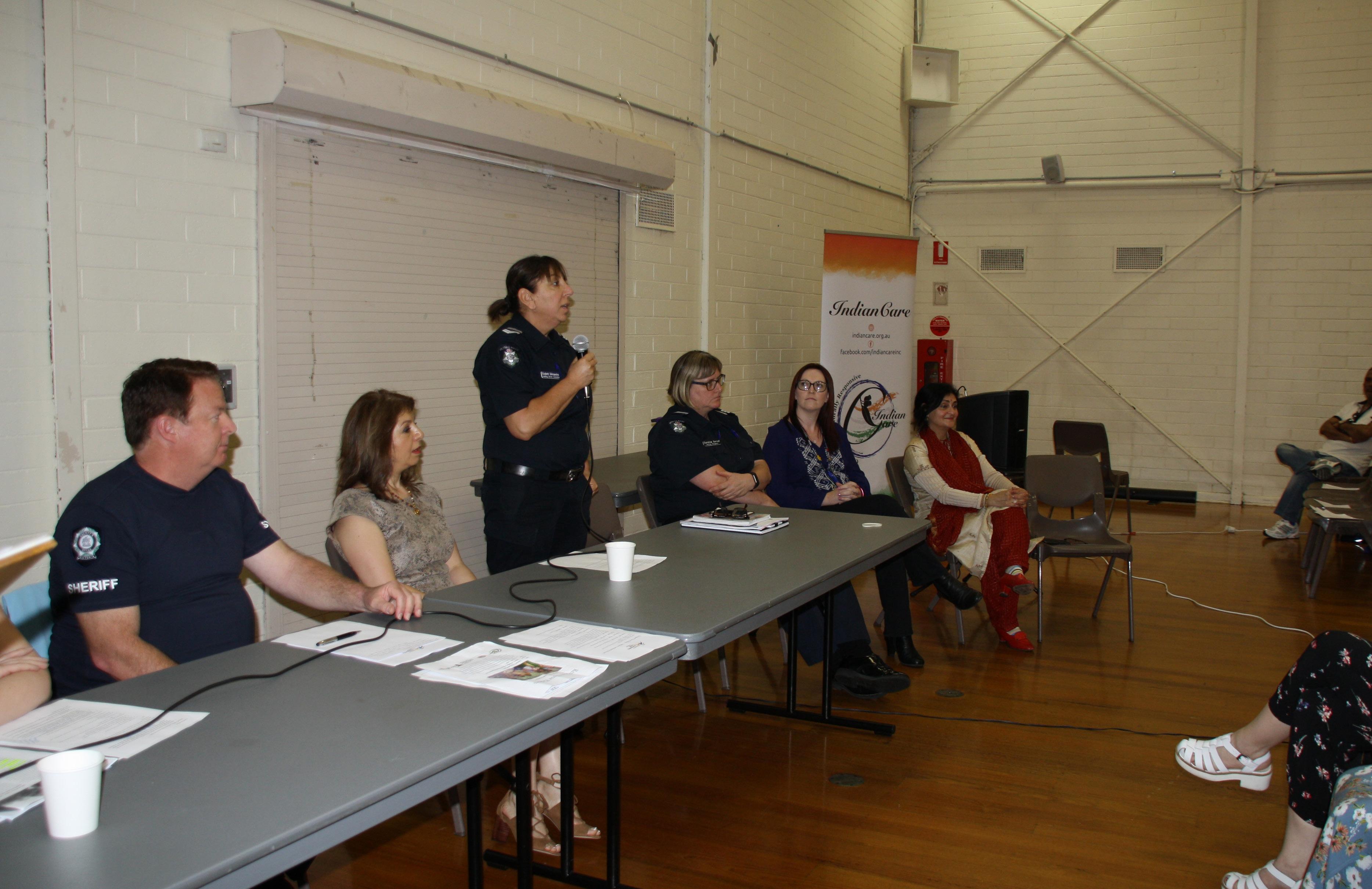
Police), Leigh Gilmore (Sheriff’s Office) and Safieh Loulagar (Migration Agent). Dominique Horne remarked that many elders feel shame seeking help. “Some simply do not want to admit that they are in this situation due to fear of retribution by the abusers, disloyalty to the family and personal dissatisfaction,” she noted. The panel reinforced their view that elders need to take the courage to speak up and not let emotions cloud their judgement. With property prices rising, high costs of living and a competitive job market, financial independence is definitely a concern for many people. Consequently, dependence is the most likely cause of
Facts and figures
> Approximately, 6% of older people experience elder abuse which is currently equivalent to about 210,000 people in Australia.
> There is no correlation with abuse and a particular community; however, being from a culturally or linguistically diverse background adds to the complexity of the issue.
> Financial abuse is the most common form of elder abuse.
> Elder abuse can occur in various settings –at home, at work and at aged cares.
> Over 90 per cent of alleged perpetrators of elder abuse are related to the older person, or in a de facto relationship.
> Older women report abuse 2.5 times more than older men.
elder abuse. “Whilst most of the abuse tends to occur when situations get worse, sometimes the abuse is subtle and takes place when the elderly member misbelieves that things are happening for their betterment,” noted Dilnaz Billimoria.
Fadak Alfayadh, Community Development Coordinator at ECLC, noted that elder abuse is a growing concern with many more people attending service providers seeking help. “Elder abuse does not always begin from bad intentions by the perpetrator and the victim. Sometimes the elderly person is unaware of what is happening to them,” she remarked.
Recognising the value of the information being provided, Anand Shome noted, “It has been great to get our community face to face with so many service providers. This in itself is a source of strength and goes some way to resolve problems in the community.” He urged everyone to spread the message and inform others.
VMC Commissioner, Mr Chidambaram Srinivasan attended the event and thanked the ECLC and the organisers for hosting the event that received a high turnout. Inderjit Jasal commented that “It was an informative and engaging forum. Members of the community raised interesting
What counts as elder abuse?
PSYCHOLOGICAL
> Someone threatening to hurt you or damage your belongings
> Verbal abuse, belittling or name calling
> Being intimidated, humiliated or harassed
> Being threatened with eviction or removal to a nursing home
> Being stopped from seeing your family or friends
> Being denied the right to make your own decisions
FINANCIAL
> Your pension or money taken from your bank account
> Your belongings sold without permission
> Your money or property taken improperly through the misuse of an Enduring Power of Attorney

> Being forced to change your Will
> Being denied access to, or control of your own funds
NEGLECT
> Not allowed to access the services you need
> Not having your physical, medical or emotional needs met
PHYSICAL
> Slapping, hitting, pushing or restraining
SEXUAL
> Someone making unwanted sexual approaches or behaving indecently towards you
DECEMBER www.indianlink.com.au
seniors
Older people have the right to live in safety, be treated with dignity and respect, and make their own decisions
twilight years
Signs of abuse
Who can be approached
> Seniors Rights Victoria 1300 368 821 (Mon - Fri 10.00am - 5.00pm) info@seniorsrights.org.au
Level 4, 98 Elizabeth Street, Melbourne, 3000
> Interpreter services at 13 14 50
> Relationships Victoria 1300 364 277
> Community Legal Centres throughout Victoria

> Victoria Legal Aid 1300 792 387
> Victoria State Trustees (03) 9667 6444
> Domestic Violence Hotline: 1800 737 732
questions which shows that some people do require assistance in understanding critical aspects of elder care.”
One senior member in attendance noted that it was a highly informative and comprehensive forum which provided him with a lot of insight into issues that he might face in the future. Another senior member recommended that, in the future, panellists should have an understanding of Indian culture and customs. This will allow for a more tailored discussion of elder abuse specific to members of the Indian community.
An extensive set of recommendations was recently handed down by the Australian Law Reform Commission, following its recent Elder Abuse Review, which the Federal Government are currently considering. Suggested changes include reforms to Power of Attorney laws and increased levels of training for members of the police force.
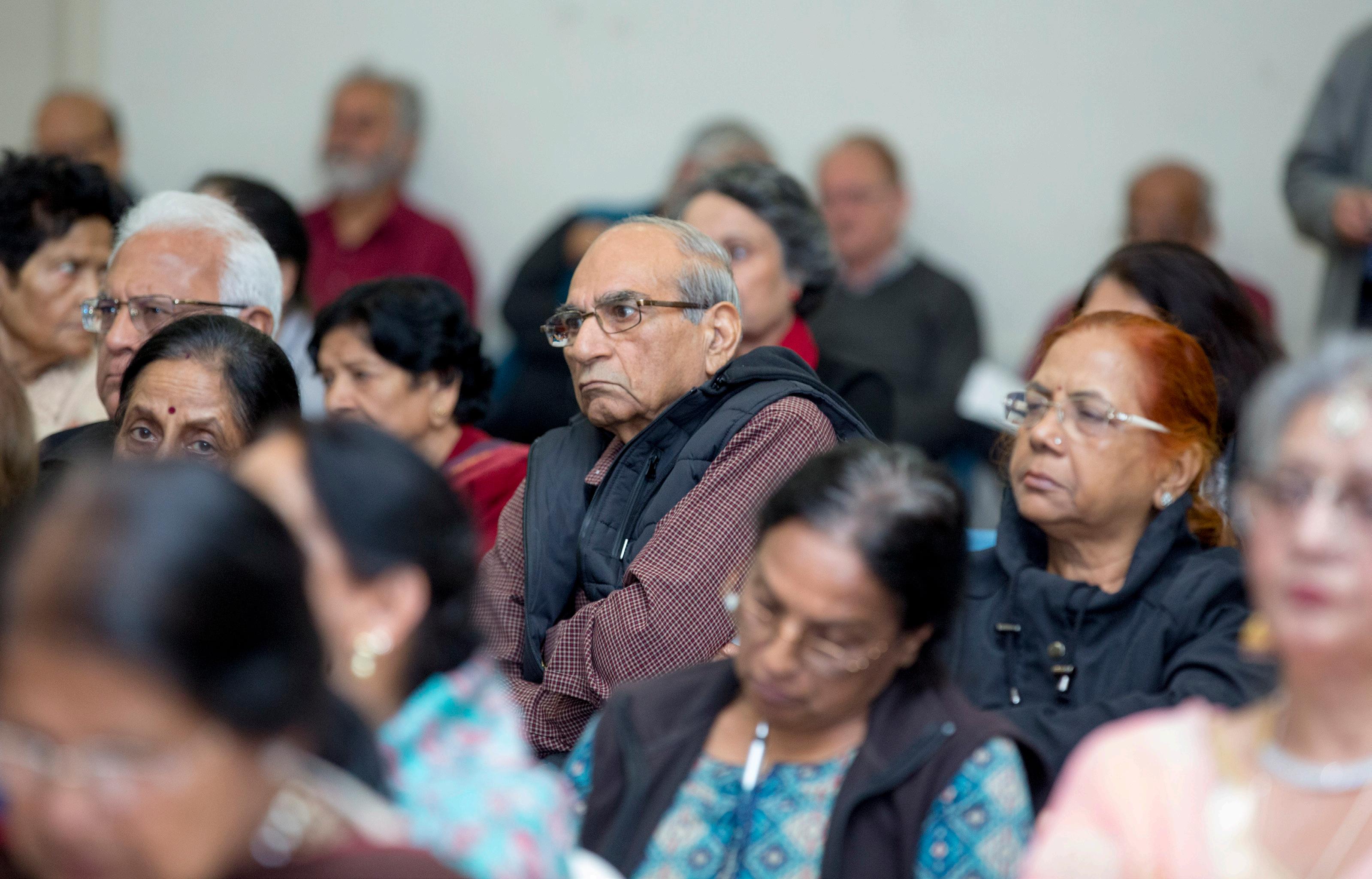
DECEMBER INDIAN LINK
Carer hovers around older person > Unkempt appearance > Ill- tting clothes or underweight > Not dressed appropriately for weather > Poor hygiene or unsanitary conditions > No food in the house, unpaid bills > Overly paranoid, excessive fear > Limited access to money/ bank account
>
Air India wishes you all a wonderful MERRY CHRISTMAS & HAPPY NEW YEAR. So keep flying and keep celebrating!



If you live in a suburb near grasslands, you’re at risk of re.














If you live directly next to parks or paddocks and a re starts, walk at least two streets back. If you live two or more streets away, stay where you are. Grass res are unlikely to spread into built up areas. Stay alert and monitor conditions. Don’t drive, visibility may be poor, accidents are likely, and you could block emergency services.


















emergency.vic.gov.au




























Download the VicEmergency app



















Authorised by the Victorian Government, 1 Treasury Place, Melbourne








DECEMBER www.indianlink.com.au
Poised for the big league
have revealed to Cricket Australia after the match.
The drawn encounter was called late in the day when the CA XI were 4-364.
Speaking to Indian Link about the way he approached his innings, Sangha said, “What worked for me was just sticking to my game plan, which was simply to keep the scoreboard ticking. I had a clear plan of how I was going to score my runs and I’m glad it really worked. I wasn’t thinking too much about the bowler, but focusing on the ball.”
Sangha, whose family migrated to Australia from Punjab four generations ago, has had a phenomenal run since he began his career with the U-15 Schoolboys carnival in Darwin in 2015. Cricket Australia’s National Talent Manager Greg Chappell has previously described the top order batsman as an elegant stroke-maker with a touch of class.
And while cricket experts laud him for his solid defense, stylish drives, nimble footwork and insatiable appetite for runs, the talented Novocastrian says his latest innings has boosted his confidence. “I’ve learnt so much about my own game here, but I’ve also got the confidence and self-belief that I can compete at this level now,” he told Indian Link from the sidelines of another match.
Sangha rates mental strength as the key to success on the field. “Everyone has skill, but whoever has the better mental side of the game will come out on top,” he says, pointing to the calm and relaxed on-field demeanour of former India cricket captain MS Dhoni, from whom Sangha says he draws inspiration for his own batting.
Recalling his family’s reaction to the feat, Sangha says, “Oh, it has been amazing. My family has been with me through my whole journey. But this is only the beginning.”
For now, the talented cricketer is now focusing on further improving his game. “To be the best player, you can’t have any weaknesses, so I’m continuing to work on all parts of my game so they are all strengths,” he says.
Indian-Aussie cricket prodigy Jason Sangha, who became the 2nd youngest player after Sachin Tendulkar to score a rst-class hundred century against England, says he’s ready for the top level
 BY TARINI PURI
BY TARINI PURI

The best way to handle pressure is to think there is none, says Indian-Australian cricketer
Jason Sangha, who is now in the record books of the game as the second-youngest player behind only Sachin Tendulkar to score a first-class century against England, and the youngest to reach three figures in a first-class game in Australia since Ricky Ponting in 1992-93. Playing against the visitors in their final warm-up match in Townsville before the Ashes began on 23 November, Jason, who is from Sydney, saved the game for Cricket Australia’s XI scoring 133 in a 263-run third-wicket stand with 22-year-old Matt Short. The young cricketer, who finished school just two weeks ago, counts it as one of his best performances so far.

With their 144-run lead against the young CA XI (3-121) at the start of play, England were eyeing an innings victory. But Sangha, along with Short, held his own against the opposition attack which featured several international players including Stuart Broad, Chris Woakes and Moeen Ali.
In his stunning innings, Sangha, who confidently weathered the barrage of short balls from England, even hooked speedsters like Craig Overton. Sangha brought up his maiden century when he worked Woakes to the leg-side. He was finally out sweeping to leg-spinner Mason Crane in the final session, the only wicket England took all day.
Brushing off questions of how he dealt with the nervous 90s, the young cricketer said, “You can’t be nervous or anxious about being in the 90s or who you are facing. You just can’t. If you are nervous or at one stage you feel like you can’t do it, you won’t get there.”
The series of bouncers he faced that day was the most intense in his short and bright career so far, Sangha is believed to
ON HIS WALL
DECEMBER INDIAN LINK
sport
CRICKETER HE GREW UP IDOLISING: Adam Gilchrist
ROLE MODELS: Ricky Ponting, Michael Clarke, Joe Root, Hashim Amla. PLAYERS HE ENJOYS WATCHING NOW: Virat Kohli (India), AB de Villiers (South Africa) and Kane Williamson (New Zealand)
WHAT’S ON
SPIRITUAL
Sri Sai Siva Vishnu Temple events
Sun 3 Dec (7:00pm-8:30pm)
Pournami Sathyanarayaa Pooja, katha, bhajans and annadhanam dinner.
Mon 18 Dec (7:00pm-8:30pm)
Hanuman Jayanthi Pooja.
Details 0411 611 031
Tues 19 Dec (7:00pm-8:30pm) Sani
Peyarchi (the transit of planet Saturn).
Graha Santhi Pooja will be performed for all rasis
Fri 29 Dec (7:00-8:30pm) Vaikunda
Ekadasi celebrations. Special pooja, abishekam and procession of Lord Vishnu, 5/4 Shaft Crt Hoppers Crossing. Details: http:// srisaisivavishnutemple.com/
Brahmrishi Sri Gurudev visit
Sat 2 Dec (10:00am) Receive personal grace and blessings from the spiritual master. Prasad will be served. Sai
Temple, 32 Halley Ave Camberwell
Sun 3 Dec (10:00am) Shiva Vishnu
Temple 52 Boundary Rd Carrum Downs
Details Brij Panwar 0414 937 633.
Yoga Hut Kirtan
Sun 10 Dec (7:00pm-9:00pm) An evening of kirtan with bhakti sunset.
Yoga Hut Brighton 145 Cochrane St Brighton. Details Andre 0411 276 096
STAGE
Mera Woh Matlab Nahin Tha
Sun 10 Dec (6:30pm-8:30pm)
Bringing Anupam Kher and Neena
Gupta back on stage after several years, Mera Woh Matlab Nahin Tha, is a carefully-worded walk down memory lane. Kingston City Hall, Moorabbin. Details eventsinfo@gmail.com
Odissi dance: Sthithi We Stand We
Belong
Sat 16 Dec (6:00pm-6:30pm)
Multicultural Arts Victoria’s ‘Mapping Melbourne’ Festival presents a free Odissi recital, Sthithi at Queensbridge Square, Southbank. Sthithi performed by students of Monica Singh Sangwan (Sohamasmi Centre for Performing Arts) brings together dancers of diverse ethnicities to re ect contemporary Asia in our city of Melbourne. This dance composition choreographed and conceived by Sharmila Biswas, with music composed by Sukanta Kumar Kundu modernizes the movements and techniques of Indian classical dance (namely Odissi), yoga and martial art. Details www.multiculturalarts.com.au
Serpent Dreaming Women
Wed 6 Sec (6:00pm-8:00pm)
Multicultural Arts Victoria’s ‘Mapping Melbourne’ Festival presents a free collaborative dance event at Bunjilaka
Aboriginal Cultural Centre, Melbourne Museum, 11 Nicholson St, Carlton.
Bharatanatyam dancers Priyadarsini Govind and Priya Srinivasan, Carnatic singer Uthra Vijay and Indigenous performers of the Gundijtmara cultural creative Vicki Couzens, Gina Bundle and Yaraan Bundle draw links with each others’ cultures and with Mother Earth. Details www.multiculturalarts. com.au
COMMUNITY
Sangeet Sandhya
Sat 2 Dec (8:00pm start) Sharda
Kala Kendra presents Sangeet Sandhya. This month’s artist is Dr Saratchandran. Some Christmas carols by Eddie Wardha and friends too. Brandon Park Primary School, 1-5 Ninevah Cres, Wheelers Hill. Details Neeraj 0452 669 305
Sawan Spring Cultural Festival
Sat 2 Dec (1:00 pm-6:00 pm)
Cultural extravaganza that features a wide variety of multicultural musical and dance performances as well as talks and workshops on Education, Diversity in Business & Finance, Teen Transformations, Arts, Yoga and Meditation. Clayton Community Centre, 9-15 Cooke St, Clayton. Details Nawal Moudgil 0403 167 441
Miss and Mrs Punjaban Australia
2017
Sun 3 Dec Williamstown Hall Melbourne.
Details Harneet 0412 955 172
Kalaraipayattu
Upto 21 Dec Introduction to Kalaripayattu, Kerala’s ancient traditional indigenous healing and martial art. Studio J Dance, 1/147 Swan St, Richmond.
Details 03 9088 0779
EXHIBITION
water+wisdom Australia India 01 Dec 2017-10 Mar 2018
Featuring the work of Australian and Indian artists, writers and researchers, water+wisdom Australia India is an exciting new exhibition that creatively explores both customary knowledge and contemporary issues
surrounding water. RMIT Gallery, 344 Swanston St, Melbourne.
ECTURE
The Art of Abhinaya
Sun. 3 Dec (4:00 pm-6:00 pm)
Bharatanatyam dancer Priyadarsini Govind presents a 2-hour lecture demonstration on The Art of Abhinaya, unpacking some of her processes for creating, capturing and choreographing the mood. Dancehouse, 150 Princes Street, Carlton North. Details
AII
Thu 7 Dec (5:45pm-7:00pm) Prof Craig Jeffrey, Director of the Australia India Institute delivers the Institute’s nal public lecture for 2017, ‘Making mobility work with India and Australia’. Elisabeth Murdoch Building, Lecture Theatre A (GO6). Details 03 9035 8047.
Book Launch
Fri 8 Dec (5:30 pm-7:00 pm) Amanda Gilbertson launches her book Within the Limits: Moral Boundaries of Class and Gender in Urban India at Linkway, Level 4, John Medley Building, The University of Melbourne, VIC 3011.
FILM Pink
Fri 1 Dec (6:00 pm-9:00pm) Hum Tum, a task force committee that creates awareness about respectful relationships and gender equality within Indian community of Melbourne by providing Family Violence education, sharing information and building support network. To support the UN initiative 16 Days of Activism against Gender-Based Violence, task force initiative Hum Tum presents a forum entitled ‘Freedom, Respect & Relationships’ at Clayton Community Centre, 15 Crooke St, Clayton. Bollywood lm Pink will be screened after.

Crossing the Line
Sun 10 Dec (12:30pm) An award winning documentary lm about the Partition of India. Presented by Anita Barar in association with Multicultural Arts Victoria and RMIT. Details anita. barar@gmail.com
NEW YEAR’S EVE Indian Dinner Ball
Sun 31 Dec (7:00pm-1:00am)
Oorja Entertainment Presents a Grand Evening of wine, dine and entertainment at Grand Hyatt
Melbourne. Details 0425 795 135
Azooba
Sun 31 Dec (7:00pm) Azooba The Food Wonderland 267 Mickleham Rd, Tullamarine. Details 03 9330 4563
Seasons-5
Sun 31 Dec (7:00pm) Seasons-5 Resorts 454 Point Cook Road, Point Cook. Red carpet entry with DJ & open dance oor, live performances and kids entertainment. Details 0433 261 157
Red Carpet NYE
Sun 31 Dec (6:00pm-1:30am) GDI & SEPWA Presents Red Carpet NYE 2018. The Grand Metropole 1/370 Clayton Rd, Clayton.
Details Harman 0425 691 297
Ghazal Indian NYE
Sun 31 Dec (7.00pm-11.30pm)
Ghazal Indian Buffet & Bar presents New Year’s Eve Celebrations with unlimited buffet, welcome drinks, live DJ and entertainment. 187 Watton St Werribee. Details 0433 009 708.
Nava Saal Sade Naal
Sat 6 Jan (6:00pm-12 midnight) Fund raising event for our players. Special cultural, comedy, play and dance performances with open DJ in the end. 397-405 Springvale Rd, Springvale. Details 0412 317 190
MISC
New council announced for Victoria’s South Asian community
Victoria’s Minister for Multicultural Affairs Robin Scott announced today that a council will be set up to address issues relating to Victoria’s South Asian community. “The objective for the council will be to develop a roadmap for south Asian communities by identifying and addressing key issues,” he told a press brie ng of South Asian media. Seeing the growing importance of the South Asian community, he said the council will bring together 25 community members ideally from the nationalities of India, Bangladesh, SriLanka, Pakistan, Nepal, Bhutan and the Maldives.
The panel will include MP Robin Scott and Victoria Multicultural Commission chairperson Helen Kapalos.
DECEMBER www.indianlink.com.au
To list your event email: media@indianlink.com.au
A Vic-India strategy in Jan 2018
Focus on meaningful engagement, equal exchange, personal connections and long-term commitment
from both sides of the partnership, much to be done and much to be gained,” said the Premier as he addressed select media and community leaders.
210,000 people in Victoria are of Indian ancestry and the number is on the increase. There were 34,000 Indian student enrolments in Victorian universities in 2016, accounting for 44% of all Indian students in Australia. In 2016, Victoria welcomed just under 112,000 Indian visitors.
“It is such a source of pride to know that more people from Indian background choose to settle in Victoria over any other Australian state. It is proof of the depth and the degree of our understanding and empathy as well as a complete validation of the opportunities that we are set to share in. With the development of this strategy and the travel in January we are well on our way in doing that,” said the Premier concluding his address.
placed demographically for periods of sustained economic and social growth due to the large number of people entering the workforce.
India is grappling with the challenge of modernising and creating smart cities and is looking for partnerships in terms of knowledge and how to go about it, according to Manika Jain, outgoing Consul General of India in Melbourne. She felt that India could benefit from collaboration with Victoria in water management and waste management.
 BY PREETI JABBAL
BY PREETI JABBAL
The Victorian Government is set to launch its India strategy in January 2018 in conjunction with Premier Daniel Andrews’ first official visit to India. The announcement was made at the Strengthening Indian Engagement Forum, held recently, by the Department of Premier and Cabinet.
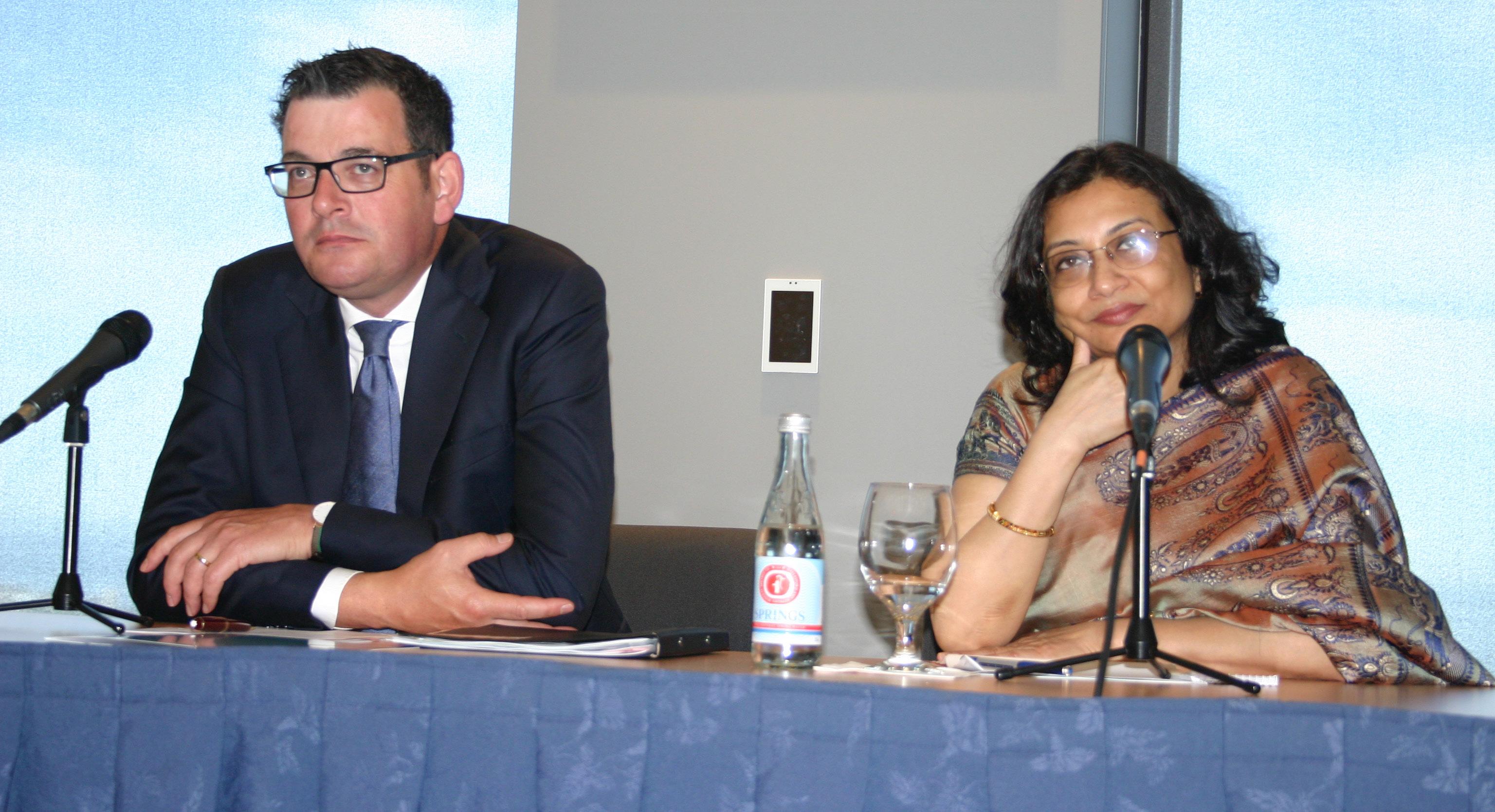

According to the Premier, the Victorian Government is committed to deepening its connections with India for enhanced twoway cooperation and mutual benefits.
The India strategy is expected to focus on areas that will have a positive and lasting impact on Victoria’s relationship with India. It will also support closer engagement across important sectors and work closely with Victoria’s partners in India to implement the strategy.
Giving a sense of its direction, the Premier said that the strategy would ensure four themes of meaningful engagement, equal exchange, personal connections and long-term commitment.
“This is not some patronising strategy where we are in effect saying to India, ‘Look at all these wonderful things we can do for you.’ There is much to be learnt
“We have been working on this strategy for quite some time. It is a framework that is positive, with real targets, milestones and metrics. It will help us in coordinating efforts across government, business and broader community to create sustainable, long-term relationships,” said the Premier.
He claimed that over 180 consultations have been held with key stakeholders in order to develop this whole-of-government strategy.
The premier briefly hailed the initiatives and collaborations already in place to improve institutional ties in renewable energy, sports, software development, transport systems, road safety and health. He said there were significant opportunities and partnership potential in addition to the key priority sectors of health, education and liveable cities and places.
He outlined the successful India Victoria partnerships that include the Indian Film Festival, Diwali festivals, Australia-India Leadership Dialogue, Australia India Youth Dialogue and the inaugural Asia-Pacific Triennial of Performing Arts (Asia TOPA) in Melbourne.
He also mentioned the efforts underway to establish Victoria’s first Indian cultural precincts in Dandenong, Wyndham and Monash.
According to the 2016 census, nearly
Robin Scott, Minister for Multicultural Affairs, echoed similar themes reflecting on the critical role that the Indian diaspora plays through their participation, celebration and contribution to Victorian society.
According to the Minister, India will have a crucial role to play in the Asian century, moving forward, as it is particularly well-
The Consul also spoke about the learning involved for Australians, despite the ‘chaotic’ nature of India. According to her, India is well versed with crowd management, demographics, and dealing with new migrants in what she termed was a pluralistic society.
The floor was opened to questions and feedback from the community to help in addressing existing concerns and exploring future possibilities. The need for a free trade agreement with India, further support for international students and more facilities for Indian seniors were discussed.
DECEMBER INDIAN LINK
india-oz
Premier Daniel Andrews with outgoing CG Manika Jain
Over 180 consultations have been held with key stakeholders in order to develop this whole-of-government strategy
‘‘ ‘‘
Still they ride
India manages to keep pride intact at 11th World Polo Championships in Sydney
 BY RITAM MITRA
BY RITAM MITRA

Last month, Sydney played host to the 11th World Polo Championships which saw the world’s top eight polo teams battle it out on horseback across pristine playing surfaces at the Sydney Polo Club in Richmond.
This year’s final saw Argentina emerge victorious over reigning champions Chile in a thrilling, golden-goal, South American showdown, a fitting finale for a tournament which was broadcast to an estimated 100 million viewers in 88 different countries.
However, hometown heroes Australia, and the popular but relatively unheralded Indians, also emerged with their heads held high after a tournament labelled as the biggest event ever to have taken place in the Hawkesbury region.
The world championships, which are held every three years, are essentially the Olympics of polo; although polo was last played at the Olympics in 1936, the championships impose a team handicap limit which is such that the best players in the world often miss out. But the tournament was no less spectacular for it;
many have labelled this year’s tournament one of the best ever, the hosts having made available 280 of the highest quality horses to visiting teams. Add to that a festive atmosphere, including world-class dining, pop-up dessert cafes by the likes of Adriano Zumbo, live music, and art and sculpture exhibitions, and it’s no surprise that the tournament was so well-attended.
In a sport traditionally reserved for aristocrats and royalty, polo’s popularity has been growing steadily over the past few years, including amongst children - it’s a shift that has been linked to the global financial crisis of 2008, which resulted in a downturn in professional players.

Polo is perhaps one of the most historically and culturally significant sports of all time, having been played, in various forms, by Persian emperors and the neighbouring Byzantine Empire in around 350 AD; women in particular during the Tang dynasty; Turkic sultans during the 1200s; and later on, throughout the Indian subcontinent since at least the 15th and 16th centuries.
But despite the long and storied tradition of polo before its spread to the subcontinent, India has a special and pivotal place in the history of the sport - the modern game of polo, as distinct from its predecessors, is derived from Manipur in India, where it was known variously as Sagol Kangjei, Kanjai-bazee or, Pulu. Of course, it was an anglicised form of the
latter, being a reference to the then wooden ball central to the game, which became the game we know today, albeit now played with a plastic ball.
The Indian team today is a combination of youthful exuberance, seasoned experience and more than its fair share of royalty and class, including the 18 yearold Maharaja of Jaipur, HH Padmanabh Singh - who was also the youngest in the tournament - and as captain, the five-cup veteran and serving army officer, Col Ravi Rathore. It’s part of a concerted effort to inject some energy into the side, and the team’s qualification for the final rounds of the world cup is clear evidence that the policy is paying dividends. “This is the first time we’ve got an actual mix of both youth and experience in the side,” said fourtime cup veteran Dhruv Pal Godara in an official reception at the Indian Consulate in Sydney. “It’s already shown results. In (the qualifiers in) Iran, we had two forwards who were both very young, and we had (threetime world cup veteran) Angad Kallan and myself. We keep control at the back and in the middle, and a lot of pressure being put on the front by the young boys, so it’s working well so far.”
Indeed, it was in a heart-stopping qualifier in Iran earlier this year that India secured its spot in the top 8, winning 8-7 thanks to a penalty in the dying minutes against none other than neighbouring Pakistan. However, the Indian side’s experience at the
DECEMBER www.indianlink.com.au
sport
POLO TRIVIA
> Polo is played in over 77 countries, professionally in 16 countries
> Polo must be played right-handed
> Players are not segregated based on gender or age
> Historically, some of the world’s best polo ponies have come from Argentina




> In a tradition known as ‘divot stamping’, spectators replace the mounds of earth torn up by the horses’ hooves at half-time
> Cloning of horses is common in professional polo
top level was more of a steep learning curve for its youngsters and veterans alike than the triumphant expedition that the team no doubt dreamed of.
India was pummelled 16-1 in a brutal opening round clash against England, put to the sword particularly at the hands of England’s Indian-origin captain, Satnam Dhillon. However, a strong showing against the Chileans, generally regarded as the world’s best, as well as a nail-biting 9-8 loss against New Zealand after squandering an 8-5 lead, saw India finish off the tournament with pride - and hope for the futurerestored.
It was an apt finish for Indian fans, whose support was labelled “overwhelming” by Kallan. “It’s heartening to know they’re with us and behind us. The key factor for any team to do well overseas is the support of your fans and your family members, they need to be with you through thick and thin,” said Kallan.
After such a promising tournament in Australia, Kallan and the rest of the Indian team are hoping they will be able to follow Australia’s example in breeding world-class, polo-specific horses, and bringing up to scratch the quality of the playing surfaces back home.
After all, having competed well with such a young team on the biggest stage, an improvement in local facilities could see Indian polo on the cusp of something special.
DECEMBER
Photos: World
Championship Sydney 2017
Polo
VMC's awards for excellence
Congratulations to members of the Indian community who won VMC honours this year
DR RAJ KHILLAN Award for meritorious service to the community

Individuals - Paid Work (Highly Commended)
For the development of the Overseas Medical Graduate Association, and for encouraging open discussion about intellectual disability and mental health in the Indian community
DR RAJ KHILLAN I s a Senior Paediatrician with Western Health and Mercy Health Services and a Paediatric Discipline Leader at Melbourne Clinical School, Notre Dame University.
He set up Australia’s first combined Women’s and Children’s Health Clinic in St Albans. The services provided by the 19 specialists in the one centre are, including paediatric surgery, paediatric orthopaedic surgery, uro-gynecology, gynaecology, obstetrics, sonography, physiotherapy, speech pathology, occupational therapy and psychology, drastically improving the accessibility of these vital services to the rapidly growing Indian community in the region.
He is an examiner of Royal Australasian College of Physicians and a Royal Australasian College of General Practitioner accredited continuous medical education provider.
Dr Khillan is also known to use his entrepreneurial skills to educate general practitioners about the business aspects about their operations, allowing them
to concentrate wholeheartedly on their patients.
At the community level, he is wellknown for his work with the Overseas Medical Graduates Association (OMGA), a medical, academic, political and socio-cultural platform advocating for overseas-trained doctors, aiding in their smooth transition to the Australian healthcare system. OMGA also organises continuing education programs and conferences for medical professionals, health education campaigns for the community and fund-raising campaigns. Along with the Australian South-Asian Healthcare Association Charity (ASHA) OMGA has helped with project sites in India, Sri Lanka, Nepal, Fiji and East Timor with financial support and medical expertise.
Dr Khillan is also the founder of Doctors Against Domestic Violence, which provides free support, guidance and medical services to the victim of domestic violence and children of victim of domestic violence in Victoria.
AJIT SINGH CHAUHAN Award for meritorious service to the community
Individuals - Paid Work (Highly Commended)
For his work with disadvantaged youth from diverse cultural backgrounds, particularly in his role at the Spectrum Migrant Resource Centre and through the creation of the Hume Interfaith Network youth program.

DR LATA SATYEN Award for meritorious service to the community
Individuals - Paid Work (Highly Commended)
For her work with culturally diverse women and children who have experienced family violence, and for improving the cultural competence of family violence prevention and intervention professionals.
DR. LATA SATYEN is a Lecturer in the School of Psychology at Deakin University. She also works as a pro bono psychologist with victims of family violence. She teaches cross cultural and forensic psychology to undergraduate and postgraduate students and has been teaching for the past 19 years in Australia.
At the community level, Dr Satyen is known for reaching out to migrant women
who have been affected by family violence. Lata is conducting a range of research projects to prevent and address family violence in multicultural communities. She hopes that with increasing knowledge, the community’s attitudes towards family violence and those affected by it will change and that the community will be able to support victims better.
DECEMBER www.indianlink.com.au accolades
NAWAL MOUDGIL Award for meritorious service to the community

Individuals - Voluntary Work
(Highly Commended)
For teaching and promoting Indian music and organising crosscultural events, particularly the SSCAFF Satrangi 7 Colors Arts & Film Festival which brings together Indigenous, Indian, Australian and other performers
AS A DEDICATED musician and artist, Nawal Moudgil is well known for his talent within the Australian Indian community in Melbourne. He is working to promote Indian music and films through the Sangam Kala Group Australia (SKGA) and NMFI - his own film, media and entertainment initiative. Always inclined to the fine arts, particularly music, Moudgil chose to pursue the promotion of creative arts full-time after gaining fame in Sa Re Ga Ma Pa World Series in 2004, when he represented Australia and New Zealand in this international singing talent hunt in Dubai.
Travelling frequently between Melbourne and Mumbai after 2006, Moudgil gained experience of film and music in his interactions with established Indian names in this field. He worked in various capacities for overseeing multiple
projects and worked with several film makers on music concerts, recordings and educational projects in Australia, India and around the world.
Moudgil established New Millennium Films International in 2009 to showcase Victorian and Australian locations to the world as potential film production destinations. In 2013, the company was included officially in Government of Victoria’s Super Trade Mission to India.
As president/festival director for SSCAFF Film Fest, Sawan Spring Fest, S & H Music Fest, Nawal Moudgil has been working to showcase potential and engage audiences, whilst promoting diverse arts and cultures. “Cultural expression in such public platforms is of great importance to ethnic communities as a positive means to share their experiences, talent and to promote social harmony,” Moudgil believes.
DR GURPREET CHEEMA Award for meritorious service to the community
Individuals - Voluntary Work
(Highly Commended)
For her commitment to strengthening interfaith understanding, including through her coordination of dialogues between students of Islamic, Christian and public schools in the northern suburbs
DR CHEEMA works as head of science at an independent college in the south eastern suburbs. She is the convener of interfaith dialogues in the northern suburbs which then expanded all over Melbourne. Various schools, local police, council, RSPCA, Blood Donation Australia, local aged care centres and local community leaders became part of this journey.
For three years now, she has organised mass blood donation camps for the local community, not only donating blood and plasma herself but also inspiring others from different nationalities and ethnicities to do so.
Dr Cheema leads teams in arranging, training, empowering and mentoring fellow members to handle domestic violence issues.
She has successfully accomplished projects like ‘Cover Me’ for homeless people in winter; helped Nepal earthquake
DEEPAK VINAYAK Multicultural Champion
DEEPAK VINAYAK is a committed community worker with over 17 years’ experience in volunteering and leading activities in the multicultural, multi-faith and regional communities in Australia. He has actively engaged with newly arrived migrants who have chosen Australia to be their homeland, training them in Australian values and ethics and helping them settle smoothly through language support and career guidance.
He is currently engaged particularly to contribute to strengthen the community resources in the areas of violence, gender justice and youth empowerment through active participation and engagement with the government, police, media and broader Australian communities.
His work with the youth has been particularly noteworthy. A key believer in the powers of youth, he has taken initiatives to not only provide mentorship to the youth but also develop formal and informal platforms to bring young people together to deliberate and act on issues like social cohesion and multiculturalism and encourage
victims through fundraisers and sent medical supplies to Fiji flood victims. She also runs a food drive for homeless people.
She conducts free employment and careers workshops focused on resumé writing, interview skills and job readiness at RMIT and Latrobe universities.
She has won special appreciation awards from the media for her initiatives in raising awareness against dowry, women’s molestation, child abuse and family violence.
In 2013, she was first runner-up at Ms India Melbourne and represented Australia and India in the US at the Global United Beauty Pageant.
She says that in the future, she is committed to promote cultural understanding, interfaith dialogues and youth leadership. “It is a highly effective way to pass on the legacy of working towards community to coming generations,” Dr Cheema concludes.
them to play active leadership roles in their own respective communities and regions, to strengthen fellow feeling, belongingness and good citizenship.
He founded the South Asian Community Link Group in 2010 and remains as patron.
A two-time People of Australia Ambassador, Australia Day Ambassador, Welcome to Australia Ambassador, VMC’s Meritorious Service Award winner, and advisory council member of the VMC, he claims his work gives him immense pleasure in connecting with people, volunteers, community, political, and faith leaders to promote peace and happiness.
He has also been awarded the Victorian Multicultural Award in 2010 and the Community Cohesion & Multifaith Award in 2013


A civil engineer by background, Deepak Vinayak currently works as Community Liaison Officer for Metro Trains Melbourne.
He is one of the first three Multicultural Champions announced by the VMC this year.
DECEMBER INDIAN LINK
Photos: Jorge de Araujo
The other fruit
BY APARNA ANANTHUNI
Why Why Why
Do the lesbians always die?
This is the refrain of the ‘Dead Lesbian’ chorus in Jean Tong’s Romeo Is Not The Only Fruit: three women in white t-shirts, each bearing the method of their death - Stabbed, Strangled and Sacrificed.
Played by Sasha Chong, Nisha Joseph and Pallavi Waghmode, they are satirical, jaded, angry, witty but still romantic queer women who spend the show trying, unsuccessfully, to thwart the star-crossed meeting of Juliet (Margot Tanjutco) and Darcy (Louisa Wall) - because, as they tell us, lesbian love stories always end “in the death of one or both of the lovers…we have to die so we can’t breed!”


Writer, director and lyricist Jean Tong explains that the creative team are young,
queer and want to party while opening up pathways into shifting the state of representation as it currently stands, “It’s 2017 and the world is still telling the same, tired old story about queer people of colour and our access to spaces.”
These queer women of colour are definitely not telling a tired story. What is tired, as the whole show makes clear, is the way classic love stories are still centred around ‘boy meets girl’, and often ‘white boy meets white girl’, with queer characters and characters of colour either literally bringing up the rear, or being thrown under the plotline’s figurative bus.


“Whether on the news or on Netflix, we’re still watching ourselves die for someone else’s happiness, someone else’s comfort. Romeo Is Not The Only Fruit is a tongue-in-cheek, fist-in-air response to this, because we’re pissed off, charming, hilarious and write catchy songs,” said Tong.
From making the white Darcy a ‘minority’ in the town of Verona (“where are you really from?” she is asked seriously by Juliet’s Malaysian grandmother, after which the women sing ‘We are so…we are so…
not racist”), to parodying “Performance
Art”, to the giant colourful cardboard props for everything from food, drink, and coffins, Romeo... is brilliant from start to finish. The actors thump, sashay, stalk and camp across the stage, and the songs are swinging, faintly Disney-like, yet irreverent. My absolute favourite would have to be Mumma knows best, where Juliet’s mother gleefully plans to poison Darcy with spicy dumplings, and literally dances with the ingredients as she does so.
Swirling with references Shakespearan, Austenian, pop culture and subculture, in this tale, Juliet is Juliet Wong who falls
in love, not with Romeo, but the recently heartbroken newcomer Darcy White (whose previous girlfriends, Emma and Lizzy, both died, as lesbian lovers always do). Juliet dreams of being a pilot but is harassed by her bitter mother and clucky grandmother to “find the right man”. Peppered with rom-com tropes - the meetcute, the disastrous family meeting, the argument - Romeo... delights with its wit, its unabandoned sense of the absurd and the melodramatic, and most of all its ‘Dead Lesbian’ chorus, always on hand to heckle, worry and quip us through the twists and turns of the story of the star-crossed lovers, as well as drop truth-bombs about the reality of being lesbian and in love.
And the moral of this “story about stories”?
Romeo is definitely not the only fruit. Queer women do meet-cute best. And… despite the “heteronormative maze” that is still contemporary love stories….
The lesbians don’t always have to die.
DECEMBER www.indianlink.com.au
An irreverent and funny show proves there’s more to love
It’s 2017 and the world is still telling the same, tired old story about queer people of colour and our access to spaces
stage
Jean Tong, writer, director and lyricist
‘‘ ‘‘
Why we need to sing about female desire
Fact: Female desire pervades South Asian music, dance and poetry, particularly that from the Indian subcontinent. Whether written by women, or by men, the female voice is the dominant mode of expressing sexual desire and longing, for gods, men, and other women.
We became struck by how Indian classical music is still replete with this same female voice. And often, it is a voice that is demanding and sure of its agency, and its right to sexual satisfaction.
Even in the beginner lessons, we find the swarajathi, Raravenu Gopabala, voiced by a heroine, who asks Krishna to ‘come’ and to ‘take her’. The song isn’t unique. In the well-known Tamil composition Alaipayuthe a heroine asks Krishna to “take her to a lonely grove and fill her with the ecstasy of union”.
These songs aren’t exceptions - we have the female voice of desire everywhere in Indian music and dance, that is the simple truth.
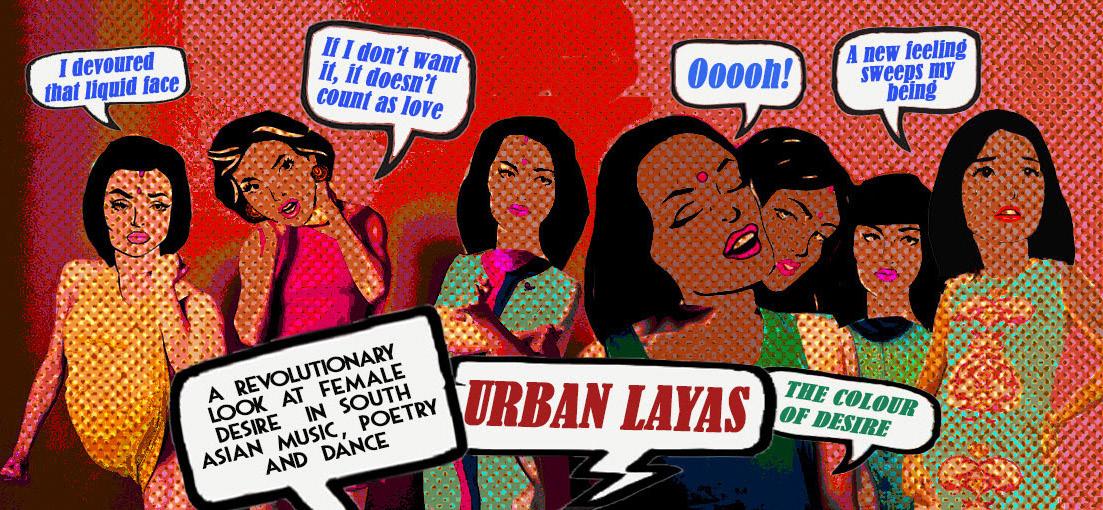
So we decided to create a music and dance concert, The Colour of Desire, that centred around female desire, weaving in these different voices and translating and asserting the female-centred sexuality of our musical tradition.
And yet Indian culture is conservative and repressive when it comes to female sexuality. It’s by now a cliché of outsider observation that the people that produced the Kama Sutra (which, by the way, is very clear on the need for women to experience sexual pleasure) are now sternly moral about sex, sex before marriage, and sexual pleasure in general. Also, sex, as a domain in popular Indian culture today, belongs to men. It is something men consume.
The way women ‘contribute’ is by making themselves available, objects of desire, rather than equal participants who have a right to be sexual because they want it and enjoy it. The recent controversy around Lipstick Under my Burkha underscores that women who are sexual are so scandalous and unacceptable that this is something that we can’t even talk about or see on screen.
The popular Carnatic musician Prince Rama Varma, once joked about how “it’s better not to translate” the 12th-century poet Jayadeva, whose songs are a favourite of classical musicians and dancers. Jayadeva wrote intensely, graphically erotic poems in - you guessed it - the female voice. So there’s a double standard: we sing erotic material, but we overlay it with a patina of devotion, and deny or prefer not to imbibe its eroticism, especially its clearly female eroticism. Ignorance, apparently is bliss. This is dangerous because we risk forgetting the rich history of this eroticism in our culture. A collective amnesia in effect rewrites our history with a different story, a story that cements a particular strain of patriarchal repression that denies women sexual agency. This re-written, historically inaccurate, stiflingly repressive story is then in turn used to justify the sexual repression of women. And because we, as women, are the receptacles of ‘culture’ and the barometers of morality, an interest or expression of sexuality is seen as threat to this falsely re-imagined fabric of culture.
Gaslighting, anyone?
Why does this matter?
In patriarchal culture - a culture which is still dominant in varied forms in most parts of the world, including Australiapart of the way women are repressed is by having their bodies - the physical body
And because we, as women, are the receptacles of ‘culture’ and the barometers of morality, an interest or expression of sexuality is seen as threat to this falsely reimagined fabric of culture. Gaslighting, anyone?
I lie here weak and broken. His sweet lips are soaked in the nectar that never sates. Let me not wilt.
Andal, 9th century
You call me to bed, I don’t make a fuss. But unless I want it myself, It doesn’t count as love.
Annamacharya, 15th century
In this clear moonlight (that makes a day of the night, I strain my eyebrows hard and look in your direction, The mellow tunes of your ute come oating in the breeze... My eyes feel drowsy and a new feeling sweeps my being Come! Mould my tender heart, make it full and ll me with joy! Come! Take me to a lonely grove and ll me with the emotions of ecstatic union!
Oothukadu, 18th century
and the images of their bodies - labelled, categorised, objectified and corralled in a way that simply does not happen to men. Women also experience gendered violence on a staggeringly, disgustingly disproportionate scale, and this often includes sexual violence. One in two women in India are said to experience domestic violence. In patriarchal environments such violence is very easily dismissed or rationalised using ‘culture’. The confluence of patriarchy and a constructed culture where women are denied sexual expression, freedom or control leads to a toxic situation where women are blamed for violence perpetuated against them because they dared step beyond the narrow definition of how ‘respectable’, ‘cultured’ or ‘moral’ women behave. Such victim blaming is rife in India; a court in India recently awarded bail to 3 students for sexually assaulting a woman on account of her “adventurism and experimentation in sexual encounters.”
Conviction rate for rape in India is a dismal 25.5 % (compared to 46.9% for other crimes). Victim blaming and gendered violence are by no means uniquely an Indian phenomena; in Australia, one in four women has experienced physical or sexual violence at the hands of a partner and 1 in 5 Australian women has experienced sexual violence. Women experience violence in every sphere - at home, in public spaces, and at work, as the #MeToo campaign has shown.
To sing of female desire, to uncover its history, and to call it by its true name - is to assert women’s rights to sexual freedom, sexual expression, and sexual choice. And this is why we - ‘nice’ Indian girls and purveyors of classical music - must sing of desire.
DECEMBER INDIAN LINK
stage
‘‘ ‘‘
APARNA ANANTHUNI and DIPANJALI RAO of Urban Layas discuss female sexuality in our musical traditions and its links to sexual repression
Debut with a di erence
An arangetram that broke the mould but retained the appeal
first time I’ve seen an arangetram supported only by younger artists, and I sensed, with a bit of pride, the smell of a new era in Melbourne’s Carnatic music scene.
 BY APARNA ANANTHUNI
BY APARNA ANANTHUNI
The arangetram (Bharatanatyam debut performance) of Divya

Shreejit Kumar, a student of Govind Pillai of Karma Dance Inc, was unique in several ways.
Number one The entire supporting orchestra was made up of secondgeneration Carnatic musicians, with Arjun Puveendran on vocal, Anita Das on violin, Kasthuri Sahathevan on veena, and Venkat Ramakrishnan on mridangam. The group performs regularly together, and the members’ camaraderie and enjoyment in working together showed. It’s certainly the
Number two The program was unusual from the very beginning. The opening item was an invocation, not to the god Ganesh or the directions, or another ‘main’ Hindu deity, as per usual, but to the water goddess Ganga, as a display of the ‘nature and variety of water.’ A beautiful, dynamic piece in the Hindustani raga Puriya Dhanashree, it depicted the goddess’s strength as well as her beauty.
Number three Quite a few of the pieces chosen reached well beyond the standard narrative scope of arangetrams. The music for Divya’s varnam - the main and most elaborate piece of the Bharatanatyam repertoire - was especially composed by Mohan Ayyar of Sydney. Prior to the piece, Mohan came on stage to discuss the process of composing music for dance - he
spoke, for example, about selecting raga Surutti for the piece because of its calming qualities, and the fact that as a ‘rakhti’ raga, it gives more scope for the dancer to elaborate.
The varnam’s subject was the moon, and mythological/traditional explanations for its different phases.
Furthermore, the first story chosen was, in fact, a Dreamtime story from Indigenous Australian culture (we were not told which specific nation the story comes from).
While the attempt to incorporate the lore of the First Peoples was laudable, I couldn’t help being a little disturbed by the story chosen, which had that classic misogynist plot found across cultures: woman makes a fatal mistake, and is killed for it. I couldn’t help wondering what an Indigenous woman would think of this story.
The jathis chosen for the varnam were lilting and complex, a pleasure to listen to and watch. Divya proved how skilled she is in all elements of the dance, with her precision of hands and arms, her mobile expressions, and her fluid acting.

Number four The arangetram addressed a vital contemporary issue, the detainment of refugees on Manus Island by the Australian government. The piece, ‘Fading’, was based on the experience of a real female asylum seeker, ‘Sujatha’, from Sri Lanka, detained on Manus for two years. It was without a doubt the standout piece of the arangetram.
Divya performed the piece, composed for cello, harp and vocals by Fiona Mackay, who accompanied on cello and vocals with Nola Mackay on Celtic harp. It explored Sujatha’s remembrance of going out in the rain back


home in Sri Lanka, the joy of the memory, and the painful, heartbreaking realisation of her inability to reach the rain in captivity. The music and lyrics eloquently translated Sujatha’s fears of ‘losing a part of herself’ and ‘forgetting her name’: Am I really here?
And do I know my name?
Will I ever feel
Complete and safe again?
It was also the first time I have seen Bharatayanatyam choreography melding effortlessly with Western classical music. Number ve Female sexual desire was mentioned on stage! In the padam to lord Shiva, Pillai made a point of speaking about how the protagonist of the piece is, in fact, a woman, and her love for the god is not merely spiritual - she desires him bodily. This was another first - usually the sexuality of padams is skirted around or made entirely incorporeal, and exclusively devotional.
Last thoughts Govind Pillai curated a diverse and thoughtfully crafted program, which looked forward to the future, and was personalised to his time and place. It was no mean feat, and one that was pulled off with immense skill by Divya, and the accompanying orchestra.
Welcome to the new era.
DECEMBER www.indianlink.com.au
stage
< Mayuri with her parents and stars
Miranda May and J J Totah

Stars in her eyes
Lights, camera action: Little Mayuri could well be on her way to a stellar career
record labels from across the globe looking for talent for upcoming projects.
BY SARONI ROY
Eight-year-old budding actress Mayuri Guha Das speaks with a maturity way beyond her age.


“I use the ‘CROW’ technique to analyse a script,” she tells Indian Link. “C is for character or the role you’re playing in the scene, R is your relationship with the other actor, O is your objective or what emotion you’re trying to show and W is where, like the place the scene is set in.” She should know – she’s just come off a highly successful talent showcase with Premiere, an American organisation that runs a global performing arts program for kids and teens.
75,000 kids from 13 countries tried out this year, and 500 were selected, including Mayuri.
The Premiere showcase was held in August this year at the Walt Disney World Resort, Florida, USA.
A week-long reality show, it attracts agents, managers, casting directors and


The performers engage in orientations and seminars by industry experts, followed by category-specific showcases like commercials, scenes, monologues, modelling techniques, dancing and singing.
Born in Bangalore, Mayuri and her parents moved to Melbourne when she was two years old. Mayuri has been performing in several stage shows, concerts and festivals across Melbourne, since the age of three. Her popularity over YouTube and other digital media drew the attention of Premiere, who called her for auditions in November last year.
Mayuri’s parents Paulami and Tridipta read up on the procedure involved in the intense audition process, to prepare her to be a strong and confident contestant.
“We went through all the information on the Premiere website,” Paulami recounts. “We researched about various acting techniques including the Meisner technique, ie, focus on the other actor as opposed to one’s own thoughts or feelings associated to the character. Day 1 was extremely high pressure as there were over a thousand people present and the script was given to us only ten minutes before the cold read. Each contestant was given about twenty
seconds to perform, so you either make it or break it! A lot of children couldn’t handle the pressure and went blank during the performance.”
Mayuri has received online training since, by renowned USA-based acting and music coaches for over a year now, and has a voice coach in Melbourne. She particularly loves the pop genre and idolises the pop star Charlie Puth. The young artist also tries her best to dedicate equal time to academics and performing arts.
As an actor, she prefers drama, as the emotions she performs come naturally to her and are easy to relate to. In a very professional and mature tone she describes one of her favourite performances. “It was a scene where the character, Jackson, is about to shoot himself and I was playing his friend and had to stop him from killing himself, but he still does it in the end! It was a very emotional scene.”
Mayuri’s willingness to achieve her goals and excel is impressive for her age.
Her extended family in India as well as friends in Australia got to see the reality show, which was broadcast live globally.
“All were stunned to see Mayuri’s confidence, professionalism and transformation at such a young age,” Tridipta says. “We sincerely encourage
all parents to give their children the right opportunities in life to exhibit their talent and skills beyond academics and enable them to become socially responsible leaders.”
Currently, Mayuri has career consultants and agents representing her in Australia, and the family hopes to finalise on an LA based agent shortly. They plan to move to LA in the near future to continue her star-studded journey and help her realise her dreams.


A FEW OF MY FAVOURITE THINGS
Fav Actor Akshay Kumar
Fav Singer Charlie Puth and Selena Gomez
Fav Song
How long by Charlie Puth
Fav Dance Bollywood
Fav Food Hot Dog
Fav Superhero

Captain Underpants

DECEMBER INDIAN LINK
the
young ones
IT’S EASY TO INVEST IN YOUR FUTURE
Superannuation - or, as most Australians call it, super - is simply a system of putting part of your money away as you earn it, to keep for when you are retired.
For many Australians, super has helped ensure they have enough money to live on after they’re no longer working. It’s important to understand how super works, and how it can help you to plan a secure financial future.

Super: It’s the law
Almost every Australian employer is required by law to place nearly 10% of each employee’s wages into a superannuation fund - a pool of money that’s set aside and invested until you retire, or reach the age of 65. Altogether, Australians have more than $2 trillion ($2,000,000,000,000) invested in superannuation.
You are encouraged to add some extra money from every pay packet, too, to help your super grow faster. The sooner you begin putting money into super, the more you are likely to have when you retire. Remember, your retirement income may need to last 20 years or longer.
The money you place in your super fund is usually taxed at a lower rate than your regular wages. This means you keep more of your own money, even though you can’t spend it until you decide to retire, or turn 65.
Making your money work for you
Investment experts at your superannuation fund invest the pool of money in different areas, where they believe it will have the best opportunity to grow over time. They may invest your super in company shares, property (like shopping centres or office buildings), infrastructure (like freeways or airports), or a number of other types of assets. You can usually choose how you want your super fund to invest your money - in investments that may rise and fall in value as the market
changes, or in an option where returns may be lower, but are likely to be more stable.
If you earn a lower income, you may also receive a contribution from the government to help build up your super savings.
It’s important to remember that any money you bring into Australia from a foreign superannuation fund may be subject to tax here. Go to the Australian Taxation Office website for more details.
Temporary visas
If you are living and working in Australia only temporarily, there are different rules about how your super is treated and when you can gain access to it. You can find more information on the Australian Taxation Office website: ato. gov.au/Individuals/International-tax-forindividuals/In-detail/Super
Finished work? Super!
When the time comes for you to retire, you’ll have access to your money. You may wish to take your super all at once (called a ‘lump sum’) but most people choose to take a little at a time (called an ‘income stream’), keeping most of their super still invested, so that it continues to earn more money for them.
Depending on your age, you may even be able to receive some of your super while you are still working. This is called a ‘transition to retirement’ plan. You can either use this money as extra income (so you can work fewer hours) or you can take advantage of super’s tax savings help build up your super balance for when you stop working entirely.
If you were born after 1 July 1964, you can begin drawing money from your super once you turn 60. Any lump sum or income stream payments you receive from super may be tax-free after 60 as well. Also, when you take an income stream after retirement, the earnings on the money remaining in your income account are exempt from tax.
Super is designed to help ensure you have
enough money to pay for your expenses in retirement, when you no longer have a regular income. Many retired people will also receive an age pension from the government to help them meet the cost of living.
Insurance in super
Your super fund may also provide you with death, disability, and income protection insurance, with your premiums automatically deducted from your super balance. Buying insurance within super is often less expensive than buying it yourself, because super funds purchase insurance policies in bulk.
Some super funds automatically accept you for cover without requiring a health check, and you can usually choose the amount you want to be covered for. No matter who you buy your insurance from, it’s important to ask questions and to understand exactly what your insurance covers.
AustralianSuper
Australia’s biggest superannuation fund is AustralianSuper, which manages more than $110 billion of its members’ money. More than two million Australians have their super invested with AustralianSuper.

AustralianSuper is what is known as an ‘industry’ fund, which means we are run only to benefit members.
Other funds, which are called ‘retail’ funds, are often owned by banks who pay
some of their profits to shareholders. All funds charge members fees for investing their money, but the fees charged by industry funds can be lower than those charged by retail super funds.
Because AustralianSuper manages a very large amount of money, it’s able to use its size and scale to make major investments at a lower cost than some other super funds.
AustralianSuper has consistently delivered its members strong, long-term investment performance - the Balanced option has earned on average 9.65% a year since the option opened in 1985 (to May 2017).*
As well as low fees and good performance, AustralianSuper offers its members flexibility and choice, with a wide range of investment options; access to discounted banking and health insurance; free seminars, education and communication programs; and simple online management of your account. Visit australiansuper.com/welcome-sa for more information about joining AustralianSuper. Get professional advice!
Finally, it’s always a good idea to ask for advice from a properly qualified financial planner. Many super funds employ financial planners to help their members, often at a low cost or even free.
More information about superannuation at moneysmart.gov.au or ato.gov.au

DECEMBER www.indianlink.com.au
ADVERTORIAL DISCLAIMER *Investment returns are not guaranteed. Past performance is not a reliable indicator of future returns. This article has been sponsored by AustralianSuper Pty Ltd ABN 94 006 457 987, AFSL 233788, the Trustee of AustralianSuper ABN 65 714 394 898. The article contains general information and you should consider your personal financial situation before making a decision. Information correct as at June 2017.
A Rushdie novel unlike a Rushdie novel
January 20, 2009. Barack Obama is sworn in as the 44th President of the United States and on the very same day “an enigmatic billionaire from Bombay” and his three sons settle in New York’s Greenwich village. An aspiring filmmaker who lives in the neighbourhood finds “the perfect subject” in the immigrant family. This rather simple plot forms the background of Salman Rushdie’s The Golden House, his 13th novel. Most of the novel revolves around Nero Golden and his three sons - Petronius, or Petya, Lucius Apuleius, or Apu, and Dionysius, or D. Petya. Petronius, 40, is an agoraphobic and an alcoholic, and Apu, 41, is a desperate artist. They were born a little less than a year apart and share the same mother and the same zodiac sign. The youngest, Dionysius, is just 22 and has little memory of his own mother. The father, Nero Golden, in his late 70s, now brings into their home a new wife, Vasilisa, a Russian expatriate.
Their neighbour, Rene, an aspiring filmmaker, loves nature; he adores the gardens and sees beauty in all things. This man of simplicity is drawn to the Goldens and in them sees a story that deserves to be told.

“He leaned forward when standing or walking, as if struggling constantly against a strong wind only he could feel, bent a little from the waist, but not too much. This was a powerful man; no, more than that - a man deeply in love with the idea of himself as
powerful,” Rene notes in one of his early observations of Nero Golden.

But while Rushdie, as in his previous works, displays immense skills of observation, he perhaps takes it a little too far in matching these with the filmmaking traits of his personality. He invokes analogies from pop culture and classical literature, and lists so many people and places and events and movies - American, European, Indian - to the point where it becomes a nightmare for the reader to keep track of.

Obama’s term as President ends quite

early in the novel and creates anticipation of “what next” among readers. The election for the 45th President dominates everybody’s minds in the next few pages and then enters this presidential candidate whose actions, words and followers bear similarity to those of Donald Trump.
“He was dangling his wickedness under our noses, revelling in it, challenging us to see it, contemptuous of our powers of comprehension, convinced of his ability easily to defeat anyone who rose against him,” Rushdie writes.




Rushdie’s astute political references and observations set the rest of the novel on a new course. And his thoughts about the real President are evident in the way he portrays “the joker” with “coloured hair”, who would become President. “Sometimes, watching him, I thought of Dr Frankenstein’s monster, a simulacrum of the human that entirely failed to express any true humanity.”
Rushdie has many references to keep the interest of readers in India alive. He invokes 26/11, traces the hyperloop from slavery to corruption, the 1993 Mumbai blasts, the beef ban and, yes, Marvel comics too.
An uncannily prescient novel that shows one of the world’s greatest storytellers at the height of his powers, The Golden House is about seduction and treachery, lies and loss, and everything that we crave for in contemporary fiction. Despite its slow and overdone pages, the novel attempts to imagine a great deal about identity, truth and terror, particularly relevant in today’s world order of alternative facts.
The novel differs a great deal from most of Rushdie’s previous works in that even the casual reader will be able to access its depths and read between the lines. Unlike the many pages from most of Rushdie’s previous novels that usually escape the readers, The Golden House will connect seamlessly with you. If you have not read any of Rushdie’s titles, this is a good novel to begin with.

DECEMBER INDIAN LINK A unique opportunity presents. Prime St Kilda Road location, situated on the ground floor of a large commercial building. 5 day a week business, Tattslotto, news sub-agent, dry-cleaning, stationery, giftware. Solid turnover with figures available. Long lease. For further information contact Jatt Bakshi 0433 340718 Thomas James Property International. Newsagency/Tattslotto Agency - Business For Sale STAM AUSTRALIA IMMIGRATION SERVICES Joshi Prasad Thalluri B.A LL.B | MARAN NO: 0210891 | Principal Migration Consultant -Skilled Migration - Compliance Issues -457/ENS - Visa Cancellations -Business Migration - Resident Returns Visa -Family and Partner Migration - Citizenship -Protection Visa - Bridging Visa -Visitor Visa -Student Visa Email: thalluri55@hotmail.com ; Phone: 0431416148; 03 97922707
The Golden House by Salman Rushdie. Penguin, 2017
books
It has a simple, easy-to-handle plot, but is relevant in a world of alternative facts, writes SAKET SUMAN
Hair care for older women
Menopause affects the appearance as well as growth of our hair
causing you to think something is wrong with you.
What you can do to minimise damage



 BY MINAL KHONA
BY MINAL KHONA

Though I turned grey prematurely, I have always had thick and curly hair like my mother. That worked well in camouflaging the grey when I had not done a touch up. Imagine my horror when, in recent days, my hair began to shed every time I washed or combed. Obviously, I hit panic mode and began to read up on why this happens and how to deal with it.

Apparently, my advancing years are to blame! Experts say that hair loss or hair damage is common around the 50-year mark. Pri- and peri-menopausal women are particularly vulnerable.
The reduction of oestrogen in our bodies leads to all kinds of changes that adversely affect skin and hair. My hair simply started breaking and falling, and would stay dry regardless of any treatment.
Since the hormone levels decline during menopause, you might find your hair falling, generally thinning out, or appearing dull. Losing hair can be a traumatic experience,

• Avoid curlers, straightening irons, overuse of hair dryers and tying your hair tightly with lots of pins. Leave your hair loose, or braided if long.
• Use natural ingredient based products to help reduce the fall. I am currently using a shampoo that has tea tree oil as one of its ingredients, and this has proved effective.
• Opt for a haircut that makes your hair appear fuller, with short bangs for instance.



• Another problem that could occur, though it does not happen to everyone, is the scalp getting scaly and dry, and the appearance of dandruff. This can make pre-existing dandruff, if you have had it, much worse. Use a medicated shampoo that has selenium, zinc or olive oil to stop the dandruff and to moisturise the scalp.
• The intake of supplements might also prove beneficial. If you feel your hair is not re-growing fast enough, you can aid the process by including specific foods to
your diet. Vitamin C is known to boost collagen production which prevents our hair from breaking. Ensure you eat a lot of citrus fruits, bell peppers and strawberries so that the Vitamin C can keep the collagen intact. Essential fatty acids found in avocados, walnuts, flax seeds and fish, produce healthy fats that keep your scalp replete with the moisture it needs, preventing dryness of hair and facilitating hair growth. Biotin is also said to be effective: eggs, carrots, oats, nuts and brown rice contain this vitamin. It produces the protein we need for hair growth.
• You can also have a weekly head massage with warm oil (olive or coconut oil) to stimulate blood supply to the hair
follicles. Do it yourself at home or go to a salon. This nourishes them, removes the dead cells from the scalp thereby cleansing it and promoting hair growth. Remember to use a hot towel to wrap your hair after the massage to open the pores so the oil can get in.
• Make lifestyle changes that include not smoking, lowering stress levels, regular exercise and adequate sleep.



Keep in mind that having healthy hair and skin needs a holistic approach and doing one without the other won’t give you fast results. Menopause is a passing phase, but it is up to you to ensure that it doesn’t permanently impact your appearance in the long term.

DECEMBER www.indianlink.com.au
beauty
RADIO
INDIAN LINK
APP
Over 60 campuses in NSW, VIC, QLD, WA, ACT & SA
Over 26 years of success stories






2017 Annual Awards Presentation

North Shore Coaching College – Victoria
BY ROYSTEN ABEL A CAN & ABEL THEATRES PRODUCTION
On a beautiful summer’s day, North Shore Coaching College celebrated and acknowledged exceptional performance
of our students in the academic year 2017 at the Box Hill Golf Club with panoramic views of the magnificent course and well attended by over 200 distinguished guests, students, parents, teachers and friends.
North Shore Coaching College has been operating for over 26 years providing the best, cost effective and exceptional tuition and coaching to over 2,000 students in Victoria. The newly appointed General Manager & Principal, Christina Chia stated that “Education represents the single biggest opportunity our children have to realise our aspirations and ambitions for a good life. As the workforce rapidly changes, our children’s skills and knowledge evolve in a world that is increasingly digital, mobile and global. North Shore provides coaching to continue success in an expanded world of accelerating change.”
The College is proud to see its students achieve successes in their studies and also the increased confidence and achieving their personal best – high success rates in both tangible results (gaining scholarship entries) and overall experience. This was reinforced by scholarship winners, Amelia Chiang and Mia Lucarelli in their presentations.
Anson Mak, National Managing Director reinforces North Shore Coaching College as leading academic excellence forging partnerships with parents, students and reputable education institutions such as University of Melbourne, UNSW and the likes to offer courses, competitions, and programs for continued student success.

The event concluded with an inspirational closing speech by Andy Mak, National Principal with a key message to remind students to always be grateful to parents for their unconditional love and support in their success.

North Shore Coaching College has 17 campuses in Victoria and is committed to advance students’ knowledge, confidence and success through coaching and tuition and develop globally-aware and culturally competent students.
Proven Success for Scholarships/Selective High/VCE








For more information please call 03 9898 9880
QPAC, Brisbane, 1–2 March 2018

Book at qpac.com.au





ARTS Centre Melbourne, 6–7 March 2018

Book at artscentremelbourne.com.au
WOMADelaide, 9–12 March 2018
Book at womadelaide.com.au
THE NATIONAL

THE GUARDIAN

WOMADelaide, 9 March 2018
Book at womadelaide.com.au
Sydney Opera House, 11 March 2018
Book at sydneyoperahouse.com
Arts Centre Melbourne, 15 March 2018
Book at artscentremelbourne.com.au
DECEMBER INDIAN
LINK
MANGANIYAR
ARTS PROJECTS AUSTRALIA, TIM WOODS & PHIL BATHOLS PRESENT
“ONE OF THE BEST SITAR PLAYERS IN THE WORLD”
“AS SPIRITED AS IT IS SPIRITUAL”
15 TIPS for travelling with a toddler
How PRIYANKA TATER minimised stress and maximised fun while sightseeing with her kiddo in Europe

1. Follow your toddler’s pace and not vice-versa
Don’t rush to tick every box on your must-see list. Remember, you are not travelling alone. The control buttons are with the smallest member of the family so be prepared to keep the pace slow and leave some things for next time.
2. Make the most of the ‘ ying with family’ option
Look for the check-in counters for families. This can signi cantly reduce wait times and make the entire check-in process faster.
3. Book a hotel room with a bar fridge… but not for what you think! Buy some milk, yoghurt, cheese and fruits and store them in the bar fridge for those toddler hunger pangs.
4. Pack light, even in winter
Unless you are planning to ski, avoid heavy winter jackets. Invest in a good quality down jacket and thermals. Layering is the key. Remember, toddlers have zero tolerance for discomfort and you don’t want them to be too hot or too cold. And don’t forget that all-important puddle suit for wet weather.
5. Carry easy-to-cook food for
those toddler hunger pangs in the middle of the night
My little one invariably had the “bhuku” (hungry) moment every night or in the small hours of the morning. I carried roasted wheat our and semolina. All I needed to add to it was hot water, milk, sugar or salt. Don’t forget our very own favourite breakfast cereal - WeetBix. I haven’t yet met a single kiddo who doesn’t like them.
6. Take a stroller with the knowledge that you won’t need it a lot
Avoid the pram at all costs. A cheap $25 stroller will do the job. Probably the only time it will be used for the purpose it was made for is when your toddler decides to take a nap. Otherwise, feel free to use it as a luggage carrier.
7. Be prepared to lift the stroller on kerbs and steps
In Australia, we are spoilt when it comes to footpaths. But don’t expect the same in Europe and the UK. Not all footpaths and train stations are pram-friendly or wheelchair-friendly and, to top it all, nding a lift at the station is like a treasure hunt.
8. Be mindful, even at pedestrian crossings
Road etiquette in Europe is not as well ingrained as in Australians. Don’t assume the car will stop just because it is a pedestrian crossing. Driving can be rash, so be extra cautious with a restless toddler on the road.
9. Take care at store doors
Not all shops and department stores have automated doors or open doors. Again, a good amount of co-ordination will be required in opening that door and keeping that munchkin from eeing.
10. Mind the gap at train stations
While we may know this well and it is a common reminder at the train stations here, some stations in the UK and Europe can have a signi cant gap between the platform and the train. Mind your toddler when boarding and alighting from trains.
11. Book family coaches on Swiss trains
Some double-decker trains in Switzerland have family coaches where one can park the stroller on the ground level and kids can play in the play area on the upper level. Not all trains have this special coach yet. At the moment, you can nd them on the following routes: St. Gallen-Zurich HB-Bern-Geneva
Airport; Romanshorn-Zurich HBBern-Brig; Basel SBB-Bern-Brig; Basel SBB-Bern-Interlaken Ost; Basel SBB-Zurich HB-Chur
12. Dress your toddler right for the mountains
Make sure your toddler has a pair of sunglasses on, enough layering, snow gloves, boots and a wooly hat.
13. Shopping? Stock up for the next season.
You will be spoilt for choice with the variety around. Whatever season you go in, Australia will invariably be experiencing the opposite. So nd the best deals and buy your toddler’s wardrobe for the next season.
14. Don’t lose sleep over comments about toddler tantrums
If you get those stern glances and sometimes even murmured comments, IGNORE. Don’t feel apologetic for your bub’s tantrums in public, feel sorry for those who don’t understand that toddlers are meant to throw tantrums.
15. Make a photo book
So that your toddler never forgets this trip ever, make a photo book with a collection of some of his/her favourite photos and show it often. Do it while the memories in that tiny brain are still fresh. This tip goes for any holiday.
DECEMBER www.indianlink.com.au
travel
PLANNING A EUROPEAN HOLIDAY? REMEMBER THIS

Always, always go for a bed-and-breakfast option. A bit dearer but it is that ‘every extra cent spent worth it’ kind of expense. You save on time and energy that you desperately need to store for the day ahead. Don’t expect air-cons in hotel rooms. Because of the summer season being so short-lived, not every hotel invests in air cons for their rooms. And even if they do, they don’t turn it on all the time. So, in summer, be prepared to let in some fresh air through the window. Buy travel passes to save a signi cant sum. Enquire at travel info desks or train stations about these and buy the one that best suits your itinerary. If you are travelling to Switzerland buy a Swiss travel pass without fail. For a tourist, it is the best way to travel within Switzerland. Carry your passport along with the Swiss travel pass. The pass is non-transferable and carries your passport details on it. There are no automated ticket machines at the train stations in Switzerland. All tickets are checked manually by ticket checkers in trains.
Check the weather before planning a trip to the Alps. When planning a trip to any of the major mountains, be it Mt Pilatus, Mt Titlis, Mt Rigi or to the top of Europe at Jungfrau, make sure you check with the travel desk in the morning about the day’s weather forecast. Jungfrau in particular, because it is an expensive trip despite a certain discount that you may get because of the Swiss travel pass. Don’t buy tickets in advance. Buy only when you are sure it is a clear day. It takes almost a full day to reach Jungfrau and you don’t want to go on a foggy day and waste all the money and effort.

For inter-country travel by train or air, book tickets well in advance. This can at times save you as much as 75%, and if left for the last minute, can burn a big hole in your pocket.



If ying between countries within Europe, reach the airport well in advance. Queues can be very long and the security process very slow.
Hire a car where possible. We drove around Scotland. Some places are best explored driving and Scotland is de nitely one of them.
DECEMBER INDIAN LINK
Family reunion at Stonehenge
London
Jungfrau
Under Newton’s apple tree, Cambridge
Eiffel Tower, Paris
MATRIMONIALS
SEEKING GROOMS
Match required for 40-year-old Christian Methodist female. Separated after brief marriage, no issues. Australian citizen, working as a teacher. 5’4”, wheatish complexion. Send bio data to rattan_16@yahoo.com
Brother based in Sydney seeks match for 39-year-old Mumbai-born, never married Gujarati girl. 5’4”, well-cultured, medium built, B.Com, working for international shipping company in Dubai. Hindu grooms please contact on 0416 475 948 or komaldxb@gmail.com
Seeking a professionally quali ed, settled match for Sydney-based, never married Australian citizen. Hindu, Punjabi Khatri 45, 5’3” slim, fair, attractive girl. Postgraduate and working on a good position in government organisation. Send details with photo indsyd2016@gmail.com
Looking for a match for our very good looking daughter, New Zealand citizen, 32-year-old, never married. 5’2”, very slim and talented. Masters in Taxation and works as a project manager in Melbourne. Ours is an upper middle class Sikh Arora family settled in Auckland. Looking for a good-looking, well settled and quali ed male preferably from Melbourne or New Zealand, from Indian good family background. Email shummirekhi@gmail.com with groom’s full details, photos and contact details
Match required for a well-settled, beautiful, 45-year-old Hindu female (looks much younger). Divorcee, professional educator, own house. Seeking well-settled and fun-loving groom for marriage. Caste no bar. Email deelgq@gmail.com or call 0422 794 566
SEEKING BRIDES
Indian Christian Protestant parents, seeking a suitable match for their 37-year-old son, a software engineer, born and brought up in Australia. Prefer Protestant girl between 28-34 years of age. Email sammy5073@gmail.com or call 0403 836 360
Seeking a life partner of Indian origin, aged 25-35, for an Indian 54-year-old guy. Australian citizen, never married, living in Sydney, with engineering background. Contact Arun Tiku 0401 387 747 or email arun9tiku@yahoo.com.au
LORD SHIVA ASTROLOGY CENTRE – ST ALBANS


PANDIT - JOSHI JI
IFYOU HAVE A PROBLEM. HE HAS THE SOLUTION
100 % CONFIDENTIAL GUARANTEE
OUR SERVICES & REMEDY


Business Problems
Sexual Problems
Enemy Problems
Family Arguments
Property
Worried about love
Lucky Lotto
Love Problems
House Problems
Marriage Problems
Money Problems
Jealousy
Spiritual Problems
Childless Couples
LANGUAGES SPOKEN: ENGLISH, HINDI, TAMIL, TELUGU
We offer catering services for all occassions:
• Birthdays, • Weddings,
• Corporate Events • Puja / Langar
We cater from 20 to 2000 guests and we suit your budget, taste and requirements.


Book An Appointment
MOB: 0405 911 575 Private Meeting Available 6/7 St Albans Rd, St Albans, VIC 3021


TIMINGS: 9.00 AM TO 7.00 PM

DECEMBER www.indianlink.com.au
TAROT foretell



ARIES
March 21 - April 19
You are ready for the season well in time, Aries. While others ap and op in the holiday frenzy, you like being a step ahead and why not, dashing Aries? You play host in your inimitable style, welcoming people into your well designed space with an exuberance that is fetching. You waltz away the season gathering hearts and a trail of the starry-eyed as only The Magician can. There is a surprise addition to your gathering that gladdens your heart.
LEO
July 21 - Aug 22
Spiritual power and personal fortitude are yours, Leo, with the card of Strength edifying your reading this month. You are acknowledged for your skills yet you may choose to still yourself in the whirlwind of action, quietly believing in yourself. Keep things on the go as the Three of Wands shimmies creative ideas into your mind for jingles, advertisements and catch-phrases. You will be working on partnership as you party and expanding your reach will be easy as Christmas pie.
SAGITTARIUS

Nov 22 - Dec 21
Your intuition is your best friend this month and will guide you with mysterious accuracy. As the blessings of Lady Luna herself grace your reading, take a deep breath and wrap yourself with swathes of comforting moonshine. Are you considering a change in your home environment? You’d bene t best from your own advice. Whether you move house or refurbish an existing one, it is certain to have more comfy corners and vibrant hues as you generously wield your magic touch.
TAURUS
April 20 - May 20
It’s been work all the way for you and it’s time for you to reap its reward, Taurus. The Chariot indicates that you could loosen up a bit, though. You have accomplished all you set out to achieve and you can bask in that knowledge. The Page of Wands invites you to consider a new activity for these holidays. A trek or an outdoor sport may prove interesting. With loved ones joining in, it promises to be a memorable time.
VIRGO
Aug 23 - Sep 22
You may want to stop the world and get off for a bit, Virgo, but you may need to reconsider since you are not alone. Weaving loved ones into your plans may take more effort than you planned but do prioritize that as it will be rewarding for all. Most of all for you, Virgo, as you have had to hold yourself back due to circumstances. You experience great joy when you give others what you most want to receive.
CAPRICORN

Dec 22 - Jan 19
DEC 2017 BY VANDANA

We all love you, December! You swirl in with ribbons of red, green and gold binding families in abiding love. Around hearths and trees go stockings, buntings, candy and gifts, carolers bring us joyous tidings. May times of togetherness be opportunities for us to create happy and lasting memories.
GEMINI May 21 - June 20

The Sovereign card appears in your reading asking you if there is a career matter for which you need someone older and wiser to come along and provide you with perspective. Your path is smooth sailing once you take this person on board. The Two of Cups brings a cherished plan to fruition - a dear project, a fresh advertisement, the launch of a new product or book will be all you envisioned and more. The key is to persevere.
LIBRA

Sep 23 - Oct 22
You are in the midst of a lot of planning. And it’s all happily connected with love! It might be trousseau shopping, honeymoon reservations or wedding plans - you’re neck deep in the stuff of dreams. You are at the centre of the activities and you’re happy for it’s a wedding. Wedding bells may even chime for you this Christmas! The Knight of Cups further invites you to actively participate in all activities with gusto. Fly you to the moon, Libra!
AQUARIUS
Jan 20 - Feb 18
The art of balance is a challenge this month, Capricorn, as you seek to deliver at deadlines, tame targets and save your sanity! It’s really time to switch off the electronics and sink into a comfy spot by yourself. With music of your choice you’ll be restored soon enough. The only balance you need is the mind-body equilibrium. Small handwork projects might interest you and you receive joy in collaborating with family members as you make and pack personalized gifts.

You’ve been going solo for a bit, Aquarius, and you’re ready to make a change now. Work and family concerns had you in their grip but you’re not going with that anymore… the phase is over. Yes, you’ll party-hop till the right folk get you to stay! You will easily acclimatize with those who offer you conversation on mystic matters and opportunity to meditate and go within. The Ace of Discs brings you greater cash ows and you’re pleased as punch!













CANCER

June 21 - July 20
If devoting time and energy into a project has left you feeling emotionally drained, Cancer, you need to slow down a bit. When you look back, you may feel you could have avoided some of that but hey, look ahead… life beckons! It is likely that there will be a happy change soon. Your burning the midnight oil hasn’t gone unnoticed. With the Eight of Wands your creativity touches a peak to secure for you a new and higher position.
SCORPIO

Oct 23 - Nov 21
The Queen of Wands asserts her creative presence and asks people to take notice. Prepare yourself for being in the public eye, Scorpio. You will be sought after for your advice on matters professional and personal. Your dynamic presence together with depth of knowledge reassures everyone around that you are the person to whom they can go to for the right direction. The card of Judgement brings you gently into a new phase
PISCES

Feb 19 - March 20
The Wheel turns and you move forward in a new direction. New circumstances, new awareness and new ideas emerge and you feel the transition to a different level of existence. It’s exhilarating as you’ve been waiting for this change for some time now. Your friends nd your charm and affable wit irresistible so prepare for a guestfall! The Page of Discs urges you to humanitarian work and you reach out to your community. This is what completes you this Christmas.
DECEMBER INDIAN LINK
cine TALK
UNSCRIPTED, TROUBLING, THOUGHT-PROVOKING
S DURGA
STARRING: Rajshree Despande, Kannan Nayar
DIRECTOR: Sanal Sasidharan
HHHHH
The rst 15 minutes of this jolting experiment with truth and nails seems completely unrelated to the rest of the lm.
This is what you get when there is no formal screenplay. S Durga (S by the way, stands for ‘Sexy’ but shhhh!) was shot over one night on a barren highway with no script. The lm is a marvel of improvisation. Director Sanal Sasidharan is not afraid to plunge into the abyss of the unknown as he explores the sexual dynamics of caste,
gender and religious discrimination on a scarily dark desolate stretch of a road less travelled.
In some unexpected way, the highway becomes a metaphor for the sociocultural imbalances in our society where the bullies often posing as custodians of the country’s moral values take over the destiny of ordinary citizens.
And so it happens with the couple Durga (Rajshree Despande) and Kabeer (Kannan Nayar) who are on the run.
The girl is Hindu and North Indian. And the boy is a Muslim from Kerala. Yup, this is the forbidden frightening world of ‘love jihad’ as seen through the eyes of a director who suffers with the couple and is able to transmute their feeling of growing dread to the audience.
As the couple hitches a ride with four sinister ‘strangers’ (billed simply as ‘strangers’), the intuitively improvised narrative gathers its cumulative strength by letting the couple’s destiny hang in abeyance. We never know till the end what will happen to them. When we leave the couple, we are given no assurance that they will be safe from predators and perverts. But we do know that the strangers who have given them a ride, are taking them for a ride that is most likely end in a horrible crime. Will the girl be raped? Will they be murdered? Or will the couple be robbed and allowed to escape with their lives?
As the scriptless voyage into the unknown reaches an end, you will nd yourself sending up a prayer for Durga - who is sexy because she is not doing what sexy people normally do in lms, namely act wounded vulnerable and hysterical under stress - and Kabeerwho is Muslim and in the company of his Hindu soulmate on a desolate highway… can it get any scarier? Can we ever hope for a balanced social order when two young adults can’t feel safe together?
S Durga is not an easy lm to watch. Its aura of uncertainty makes
LIGHT FILM, STRONG PERFORMANCES
TUMHARI SULU
STARRING: Vidya Balan, Manav Kaul, Neha Dhupia, Malishka Mendonza
DIRECTOR: Suresh Triveni
HHHHH
Tumhari Sulu is the story of Sulochana Dubey aka Sulu (Vidya Balan), a middleclass housewife with an indefatigable spirit who is in the constant pursuit of excelling and winning contests and competitions, which give her immense satisfaction. Perhaps subconsciously, it stems from the fact that she is Class 12 fail as her banker sisters and father constantly remind her.
Sulu, as she is fondly called, is always eager to participate in contests and win - whether it is a night lamp or a pressure cooker. Her enthusiasm and con dence keep her going and her middle-class humdrum life does not deter her from giving these a shot.
It is on one such occasion that she comes across the announcement for an RJ hunt and sets about pursuing it. The lm’s main body revolves around how Sulu becomes a popular RJ, on a night
show, tastes success and yet, faces ak at home.
Director Suresh Triveni manages to create the middle-class milieu complete with Sulu, her husband Ashok (Manav Kaul), a manager in a small-time mill and their 11-year-old son, Pranav, to perfection.

Whether it is Ashok’s constant bickering with the TV company for having sold him a faulty piece and thus seeking replacement or Sulu’s family giving her advice to leave the RJ job at night, are all palpable instances that the audience can fully relate to.
A performance-oriented light-hearted lm, the treatment in some parts however is a tad amateurish. While the rst half establishes Sulu, her spirited personality and her secret longing to prove herself, the second half drags and, at times, lays undue emphasis on unnecessary trivia, which makes for tedious viewing. A lot of the situations seem forced and trite, as if to create some drama.
Vidya Balan shines as the effervescent, determined, yet vulnerable

Sulu. She is endearing with her simplicity and innocence as a middle-class housewife, who unabashedly asks for a TV instead of a pressure cooker as she has already got one.
Ashok (Manav Kaul) excels as the loving husband, who willingly plays second ddle to his wife, supporting her in her realising her dreams. A complete natural, he effortlessly slips into the role of a middle-class husband and brings the right element of subtlety to his character.
Neha Dhupia as Maria, the big boss of Radio Wow, ts her role like a glove and delivers with the requisite con dence and panache.
All other actors portray their roles
you uncomfortable and queasy. It is thoroughly unpredictable and frequently out of control.
The cinematographer (Prathap Joseph) goes with the couple’s fears and insecurities capturing, not the outside world that creates these negative thoughts but the emotions that ow from within the couple as they try to remain calm under stress.
The thing about S Durga is, nothing happens to the couple. Not really. Till the end they are unharmed. And the social transgressors who offer them a ride keep reassuring the couple that they are safe in their company.
But are they? Director Sanal Sasirdharan constructs a spiral of terror without actually surrendering to the rituals of horror.
Watching S Durga, you may feel at times like a wayward traveler who has lost his way while trying to escape from a situation of oppression. In doing so, the lm creates yet another level of ineluctable terror. Tyranny, oppression and persecution are inescapable in a society where children are taught to look at the opposite sex with curiosity and other religious communities with caution.
It’s not love jihad we should ght. It is the aversion to love - and not just romantic love - that needs drastic revision in our social order. S Durga, in its unrehearsed improvised way, tells us why love is such crime on the highway to hell.
Subhash K Jha
with sincerity and shine on several occasions.
The music of the lm is melodious and Ban Ja Tu Meri Rani is sweet and wellpicturised. It brings out the chemistry of the couple.
The lm has moderate production values but be tting the class of society depicted. Nothing seems incongruous.
Troy Ribeiro
DECEMBER www.indianlink.com.au
entertainment
BEST TRAVEL ROM-COM SINCE JAB WE MET
mismatched they make chalk and cheese appear like long-lost twins - take off on a journey that they, and we, can never forget.
More than anything else, it is just so refreshing to meet protagonists who are over-thehill and not afraid of the view on the other side. At least not afraid to peep with brazen curiosity to see what lies in store after middle age.
QARIB QARIB SINGLLE
STARRING: Irrfan Khan, Parvathy
DIRECTOR: Tanuja Chandra
HHHHH
Look, there are lots of problems in Qarib Qarib Singlle - as there are in life. But that’s what makes life, and life in the movies, worth living.
Qarib Qarib Singlle is a delightful ‘romp’-com about two middle-aged strangers - one a widow and the other a vagabond - travelling together to meet his ex-girlfriends. Don’t giggle. Nothing new here. But then if you want something new, please visit your nearest mall and buy yourself a fresh
coat of paint for your living room. Movies make sense only when they bring us characters we know in ways that we never knew that we knew them.
And I can swear I have met Yogi and Jaya somewhere. The fact that they are played by Irrfan and Parvathy (a prized nd for Bollywood) is just so providential for director Tanuja Chandra. The director gets the best possible actors for the two principal parts. I can’t imagine what Yogi and Jaya would have been like had they been played by George Clooney and Meryl Streep.
What follows after the awless casting for the awed protagonists is sheer serendipity, as Yogi and Jaya - so
CRUELTIES OF SMALLTOWN ALLIANCES
SHAADI MEIN ZAROOR AANA
STARRING: Rajkummar Rao, Kriti
Kharbanda
DIRECTOR: Ratnaa Sinha
HHHHH
Kanpur joins the growing league of north Indian towns that have lately been used to locate and pin down charming smalltown romances about men and women with large families and loud voices who eat, belch, fart and insult one another without the fear of being judged.
Before you holler about cultural and regional stereotyping, let’s quickly move on to meet Satyendra, alias Sattu, and Aarti. They are the aspirational 20-something small-towners with stars in their eyes. He thinks she looks like actress Juhi Chawla. She thinks he is her superstar Shah Rukh Khan.
The thing about Rajkummar Rao and Kriti Kharbanda is that that they can play their aspirational characters with endearing assuredness. For Rajkummar, this is child’s play. But Kriti comes into her own imbuing her small-town character with a sense of mounting exuberance and plummeting disappointments.
Debutant director Ratnaa Sinha often loses the plot in the urry to catch the sweaty revelry of the Indian middle class as it cruises from its tradition-bound attitude towards social issues such as arranged marriage and dowry, into a new virtual world of smart phones and not-so-smart life’s decisions.
Shaadi Mein Zaroor

Aana is a very ambitious lm. It wants to keep its protagonists Sattu and Aarti in the “cute” area. But it also dares to take them into the grey zone. Aarti runs away from the mandap like Amrita Singh in Aaina and Vani Kapoor in Shudh Desi Romance because she wants to compete in the civil services.
Not caring about making her prospective bridegroom and his family look like stood-up idiots, she does her own sel sh thing (prodded, I might add, by an intellectually-challenged sister who should really have minded her own business).
Then it’s Sattu/Rajkummar Rao’s turn to be mean and vengeful. The moral makeover and the dramatic leaps of
So, I was telling you about Jaya and Yogi. Jaya is a 35-year-old widow and Yogi is an obnoxious ‘chipkoo’ - a human leech - who just doesn’t know when to stop trying to get the other person’s attention. In real life, we avoid the Yogis, although we know they are helpful, kind, generous, considerate and well-meaning.
Irrfan pulls out all stops to play Yogi. He rede nes the word ‘obnoxious’, and manages to make Yogi endearing, like a distant benign loud and crass cousin who makes politically incorrect ambivalently sexist comments sound plausible and acceptable. I doubt any actor, except Irrfan, could have played Yogi so honestly.
Irrfan has a terri c co-star in Parvathy, a well-known name from Malayalam cinema. She plays Jaya with the right doses of insecurity and swagger, pulling in her breath when tense, exhaling exuberantly when relaxed, making Jaya one of Bollywood’s rst post-30 heroines whose insecurities de ne rather than obstruct the free ow of feistiness. There are memorable cameos dotting the devilishly ippant plot. Sidharth Menon as Jaya’s brother on Facetime, is a part that shines for its writing.
Navneet Nishan as a ditzy gossipmonger shows up twice with lumbering languor. And the wonderful Brajendra Kala is terri c in a cameo as a hotel receptionist wondering if he should allot a single or a double room to Yogi and Jaya.
Our thoughts, exactly.
Though we know how this would end (movie hai na, baba), we get sucked into Yogi and Jaya’s crazy Bharat Darshan, probably because we have all been in such situations thrown together with people whom ideally we would avoid. Also, the journey is so strikingly captured.
Yes, some portions after the midpoint get repetitive. The narrative tends to sag in parts. But nothing that Irrfan and Parvathy can’t swoop up in their arms and revivify.
And yes, get ready to fall in love with that vintage Amit Kumar-RD Burman number Bade achche lagte hain all over again.
Subhash K Jha
mood are achieved abruptly and with little concern for narrative smoothness.
Many dramatic portions are done in the spirit of desi soap opera, and the “happy” nale seems more a hasty sendoff than a real solution to a relationship which rapidly swerves into a messy tangle of irreversible wrong-doings.
Many of the small-town rom-com stereotypes are way too obviously ashed into the frames to be convincing.
Aarti’s sister awkwardly holding a cigarette in her hand in the night time and giggling about Aarti’s prospective sex life is that token “frumpy-mofussil-womantalking-sex” scene that we have seen in all
the recent small-town rom-coms.
All the habitually competent actors including Manoj Pahwa and KK Raina do their bit ef ciently. But the narrative doesn’t allow them to soar higher than the glass ceiling that the lm’s strenuous pro-feminism tone imposes on the characters.
All said and done, though, the lm is worth a try for its unquestionable sincerity of purpose and its winking familiarity with small-town mores and quirks.
If only these were not used with such placard- ashing righteousness.
Subhash K Jha

DECEMBER INDIAN LINK
the BUZZ entertainment
UP-TO-DATE NEWS ON WHAT’S HOT AND HAPPENING IN BOLLYWOOD
THE PADMAVATI OUTRAGE
Bollywood is of cially outraged. The strong opposition to the release of Sanjay Leela Bhansali’s historical drama Padmavati by many groups claiming to represent the Rajput community has upset lm personalities.
We don’t blame them. Outraging over a possibly ctional character from history without having watched the lm sounds ludicrous to us too. Just as ludicrous are calls for a ban on the lm - and the beheading of Bhansali and actress Deepika Padukone.
The “voluntary” postponement of the release of the lm from 1 December by the lm-makers seems to have become the proverbial last straw, prompting several celebrities to speak out (further reading ahead in these columns).
The lm has been mired in controversy over conjectures that it “distorts history” regarding Rajput queen Padmavati, a contention that Bhansali has repeatedly denied.
But that hasn’t stopped Shri Rajput Karni Sena, an organisation of the Rajput community, from protesting against Padmavati for the last few months. The Sena now wants a ban on the lm.
Kunwar Surajpal Singh Ammu, a ruling BJP leader in Haryana, has gone several steps further and said he rmly stands by his announcement of Rs 10-crore reward for beheading Bhansali and Padukone. Ammu has also issued a threat to break the legs of actor Ranveer Singh.
“Padukone is just like our daughter and she must stay away for playing roles like the one she played in Padmavati,” he said, adding: “If anyone raises an eye (sic) at our sisters and daughters, they will be punished.”
The issue has taken political hue as well, with Madhya Pradesh Chief Minister Shivraj Chauhan announcing that the lm will not be released in the state because he claims it has distorted facts.
Uttar Pradesh Deputy Chief Minister Keshav Prasad Maurya also said that the lm would not be allowed to release in the state unless its controversial portions were removed.
Even Rajasthan Chief Minister Vasundhara Raje wrote to Information and Broadcasting Minister Smriti Irani to ensure that Padmavati is not released without necessary changes.
Some people are smelling a conspiracy and are saying the controversy is a ploy to ensure that the lm releases after the Gujarat assembly polls. No wonder then, that in such a charged atmosphere, the lm-makers have ‘voluntarily’ decided to defer the lm’s release.
SHABANA AZMI: VERY ANGRY
Never one to mince words, Shabana Azmi is vocal about her distaste for the baseless anti-Padmavati protests. She feels it’s time for the lm industry to take a collective stand against the ugly controversies and protests surrounding the release of Padmavati.

Shabana wonders why so little action has been taken against the perpetrators of violence against the Padmavati team. “The CM of Rajasthan is sitting pretty. The rst FIR lodged is under the Arms Act because there was open ring. Beyond that no action is taken against the criminals threatening naked violence.”
Shabana also lashes out at the censor board for delaying the certi cation of Padmavati. “The CBFC sends the lm back because some paperwork is not complete!!! Only after 63 days will the lm be screened for CBFC when Gujarat election is over and done with! Are we fools to not see through the design of fomenting unrest and polarizing votes?”
The formidable actress-activist does not hide her resentment at what she sees as a victimisation of the entertainment industry for political purposes.
“I am very angry. The lm industry needs to take a strong uni ed action and refuse to be sitting ducks anymore. If such threats had been made against any member of the political class would the reaction have been the same? Are the people in the lm industry not equal citizens of this country?”
OTHERS UPSET TOO
Reacting to the controversy, actor Naseeruddin Shah said, “Having a Central Board of Film Certi cation is sheer hypocrisy when the government has set itself up as censor.”
Another veteran Kamal Haasan said, “I want Deepika’s head… saved. Respect it more than her body. Even more her freedom. Do not deny her that. Many communities have opposed my lms. Extremism in any debate is deplorable.
“Wake up cerebral India. Time to think. We’ve said enough. Listen Ma Bharat,” Haasan tweeted.
Bollywood’s ‘showman’ Subhash Ghai also extended support to Sanjay Leela Bhansali, saying he is entitled to “cinematic liberty” and that it is wrong for his detractors to pass an opinion without seeing a lm.
“I will not comment about the Padmavati issue because I am not a politician. I respect my lmmakers. You have to understand one thing that you cannot judge something without seeing it,: Ghai said here during his masterclass at the ongoing 48th
International Film Festival of India.
“One artiste has made a lm based on his imagination. He has not said that he is uniting with 15 organisations to make a historical lm,” he added. The lmmaker added, “You haven’t seen the lm and you are already assuming that something will be wrong in it. Sanjay Leela Bhansali is a responsible person. But there will be some colours of cinema in the project. He will take some cinematic liberty.”
Ghai also suggested a solution to the whole issue.
“First watch the lm. If you have a problem after watching the lm too, then talk it out,” he said.
Director Tanuja Chandra, whose lm Qarib Qarib Singlle released recently, added, “In a country like India, bursting at the seams with real, huge issues, when a lm with possibly a ctional character becomes a cause to ght for, the government must be clinical, swift, absolute, in protecting it and in dismissing the ridiculous ambitions of anyone threatening to break the law. Any deliberation or delay in doing this is wrong and honestly, kind of tragic.”
The atmosphere of “intolerance” and “barbaric” statements on “beheading” of lmmakers and actors has also upset Rohit Roy, who says he is frustrated about being an Indian living in India.
“For the rst time, I’m sad, frustrated, enraged that I’m an Indian living in India... Never thought I’d ever say that. Indeed, very sad. Jai Hind,” Rohit tweeted.
He said, “India is what it is because of its diversity, sense of democracy and importantly, it’s secularism. Hinduism, a way of life, is inclusive in nature.”
“India and Indians have become intolerant,” he stressed, and added that “one doesn’t know what wrath of which faction one will incur while even making a statement.”
TRYING TO RESOLVE ISSUE THROUGH DIALOGUE: CENSOR BOARD CHIEF
Central Board of Film Certi cation (CBFC) chief Prasoon Joshi said the Board was trying to follow a process of dialogue vis-a-vis the stalemate surrounding Padmavati, whose release has been delayed because of

DECEMBER www.indianlink.com.au
SHABANA AZMI
opposition from conservative groups. Speaking to reporters on the sidelines of the inaugural function of the International Film Festival of India (IFFI) near Panaji, Joshi said, “We are trying to follow processes. Instead of arguments, attempts are being made to have a dialogue on the issue.”
CINEMA IS ALL ABOUT LOVE: SRK
Amid the raging Padmavati controversy as well as the row over exclusion of two lms from a section of the 48th IFFI, Bollywood superstar Shah Rukh Khan, through a mixture of symbolism and subtlety, spoke of cinema as a balm of love for dissent and a catalyst for unity, at the inauguration of the movie jamboree in Goa.

“There is a term in Sanskrit
‘Vasudhaiva Kutumbakam’. It means bringing the world together like a family. I believe no matter what your language is, no matter what country your story comes from, and no matter what your ideology is, storytelling and listening should be a familial experience which binds us together. It makes relationships stronger, even in the face of dissent and discussion as it usually happens in a family, instead of tearing us apart,” he said.
“I truly believe that lms are made with the collaboration of hundreds of people coming together, working relentlessly for an idea they believe in
CAPTION CONTEST
WIN MOVIE TICKETS!
What’s the quiet chitchat here between RANVEER and DEEPIKA?
Send your response to: media@indianlink.com.au TO WIN A MOVIE TICKET!!
and they love and they want to share it with the world. This idea becomes the lm which we all watch, and sometimes we feel very happy watching it,” said the actor.
“Sometimes, we dance along with the lm. At other times, we get angry, disturbed or agitated. That exactly is the magic of storytelling, a magic which has the power to touch all our senses and in doing so, actually binding us together. The essence of storytelling is incomplete, if there is no listener,” he said.
SHAHID OPTIMISTIC ABOUT RELEASE

Actor Shahid Kapoor, one of the three lead actors of Padmavati, said he is con dent that the historical drama will release and will be as loved and celebrated as his Udta Punjab.
“It will be a precedent which I am not proud of if the lm nds it dif cult to release. I believe that the lm will release. I believe that this process is dif cult; I went through a similar process with Udta Punjab. I eventually saw the lm come out - and loved and celebrated,” Shahid said.
“Any kind of conversation which is violent in nature is absolutely uncalled for anD unfortunate,” Shahid said.
“I believe in the process of certi cation and I am very con dent that eventually Padmavati will come out and it will come out in full force. I don’t
think there is anything in the lm that is unacceptable or not in good taste. I think our constitution says you are innocent until proven guilty,” he added. In the lm, Shahid plays Rawal Ratan Singh, husband to Rani Padmavati’s character essayed by Deepika. Actor Ranveer Singh plays Alauddin Khilji.
I STAND BY PADMAVATI, BHANSALI: RANVEER

Ranveer Singh, one of the three lead actors of Padmavati, said he stands by the movie and its director Sanjay Leela Bhansali.

“I am 200 percent with the lm and I stand by it as well as Sanjay Leela Bhansali. Given that it is a very sensitive time right now, I have been speci cally asked not to say anything. Whatever of cial communication with regards to the lm needs to be made, you will receive it from the producers,” Ranveer said.
Before any further questions could be put on Padmavati, Ranveer told the media, “Thank you very much for coming out today and before some ruckus happens here, I need to get out of here.”
The actor plays Delhi Sultan Alauddin Khilji in the movie, which Bhansali says is a tribute to the valour of Rajput queen Padmavati.
WHAT TWEETY BIRD TOLD US THIS WEEK
Match the following tweets to the celebs that made them.
Karan Johar, Twinkle Khanna, Salman Khan, Shah Rukh Khan, Farah Khan
Life is great when Ed Sheeran loves the shape of me
Opening the festivities at 48th IFFI, 2017 in Goa. A great platform for lmmakers to showcase their talent and art.
The FRANCHISE continues!!!! The college opens its doors to a new Student!
Share your views with us on our Facebook page /IndianLinkAustralia
SWAGat karo toh dil se karo aur swag se
The nation wants to know-Is this 10 cr beheading fee inclusive of GST?
LAST ISSUE CAPTION CONTEST WINNING ENTRY
What’s the chitchat here between DEEPIKA PADUKONE and ALIA BHATT?
Vishal Gupta:
Deepika: I am done with Ranveer. Alia: You go girl! Me: Happy imagining that she is single now Vishal wins a movie ticket
A FEW OTHER GOOD ONES
Manjoo Sharma Lalwani: Deepika: “Where did you nd those jeans with bigger holes than mine”



Raghu Rules: We make loads of money but we both are wearing ripped jeans. Isn’t it funny? Rakhi Chaudhary: Let’s do ghoomar!!!!
Ashika Jagdish: Alia: So, what did you think of Badrinath ki Dulhania? Deepika: Look Alia, aapakee lm achchee hain, but let’s face it, my movies are just so much better!
DECEMBER INDIAN LINK
WHO WORE IT BETTER? GWYNETH PALTROW or DEEPIKA in STELLA MCCARTNEY
SHAH RUKH KHAN
RANVEER SINGH
SHAHID KAPOOR
ask AUNTYJI
Quoted vs Actual vs Invoiced

DEAR AUNTYJI
Now that summer is practically here, we thought it would be a good idea to tidy up the house and get some small renovations done. We have a lovely home and I want to keep it looking wonderful all the time. So we needed to get some light ttings installed and we called up some tradies for quotes. Now, most of their quotes were around the same, however, two of them gave us quotes for a cash job. This incensed my husband, who is upset that these folks are not paying taxes. One of the tradies seems like a nice fellow and appears to be very much aligned to attention to detail. This is the guy I want working on my housebut my husband keeps carrying on about not engaging tax cheats and that he has issues with such folks. Can you please provide me with some guidance here, Auntyji? I just want the job done.
AUNTYJI SAYS
Oh dear, how easy it is to be high and mighty and gaze upon the world with such a stalwart single-minded view of
the idea of one’s self-righteousness. I wonder what the view is like from that pedestal he has placed himself on. The solution is really quite simple. If your straight and narrow patidev has issues with the tradie giving him a quote for a cash job, then ask the tradie to provide a quote for an invoiced job. There, simple. The tradie will add another $500 to the job, and your husband can sleep easily at night knowing that there is a tax invoice traceable back to the job and the tradie is doing the right thing by Australians everywhere. This really is a simple solution. But do let me know what hubby’s position is after he sights the quote for an invoiced job. I am sure his principles aren’t as deep as he thinks his pockets are.
Baby brain
DEAR AUNTYJI
Recently we caught up with former neighbours of ours who had moved away to be closer to their parents - as after the birth of their baby, they needed help. Auntyji, previously, Ashley and Kal were the most interesting people. They
could debate for hours about global geo politics, about global warming, gender pay parity, euthanasia, animal rights etc, you name it. They were the font of all knowledge, and regularly kept us informed and entertained with riveting information. But, when we met them on the weekend, and this is 2 years after Larissa was born, they had become the embodiment of spectacularly dull people. All they spoke about was Larissa. They did not have anything interesting to say and when I tried to venture into the subject of Trumponomics, they looked at me with a vacant stare that chilled me to the bone. It’s as though Larissa was a demon child who had sucked out all life from her parents. And don’t even get me started on Larissa. God, what an obnoxious child - always wanting attention. I had to fake a smile and spout insincere and hypocritical observations such as, oh you dance so well, when Ashley insisted that Larissa bust a move, or oh you’re sho-shmart when Kal encouraged Larissa to sing a rhyme. I am so disappointed about this that I have vowed to my husband that when we have kids, and I become like this, to euthanase me post haste. How do I ensure this does not happen to me?
AUNTYJI SAYS
Well, Ashley and Kal are those dull, boring people who are probably so fascinated by the fact that they have created a little human, and are so caught up with what they have done, that all they can do and say is, look, we did that, and point at little Larissa. They are the adult equivalent of a toddler who builds a sandcastle and who thinks he has conquered the universe. Hopefully, much like a bully who kicks the sandcastle down, Kal and Ashley will soon learn that they are as dull as lassi with no salt. So it’s simple. Write yourself a note of all the things you never want to say and be like when your kids come along, and put that list somewhere where you can see it every single day. And until the kids arrive, make sure you stay reading and educating yourself on world affairs - because kids are terrible little sponges who take up all of your time and leave you with little. This means that you can kiss reading The Guardian or Washington Post or The Atlantic goodbye for a couple of years when kids arrive. So be grateful that Kal and Ashley gave you a vision of your future. You don’t want to become them. But only you can stop this eventual decline. Happy reading!
INDIAN LINK SOCIAL MEDIA









DECEMBER www.indianlink.com.au
backchat
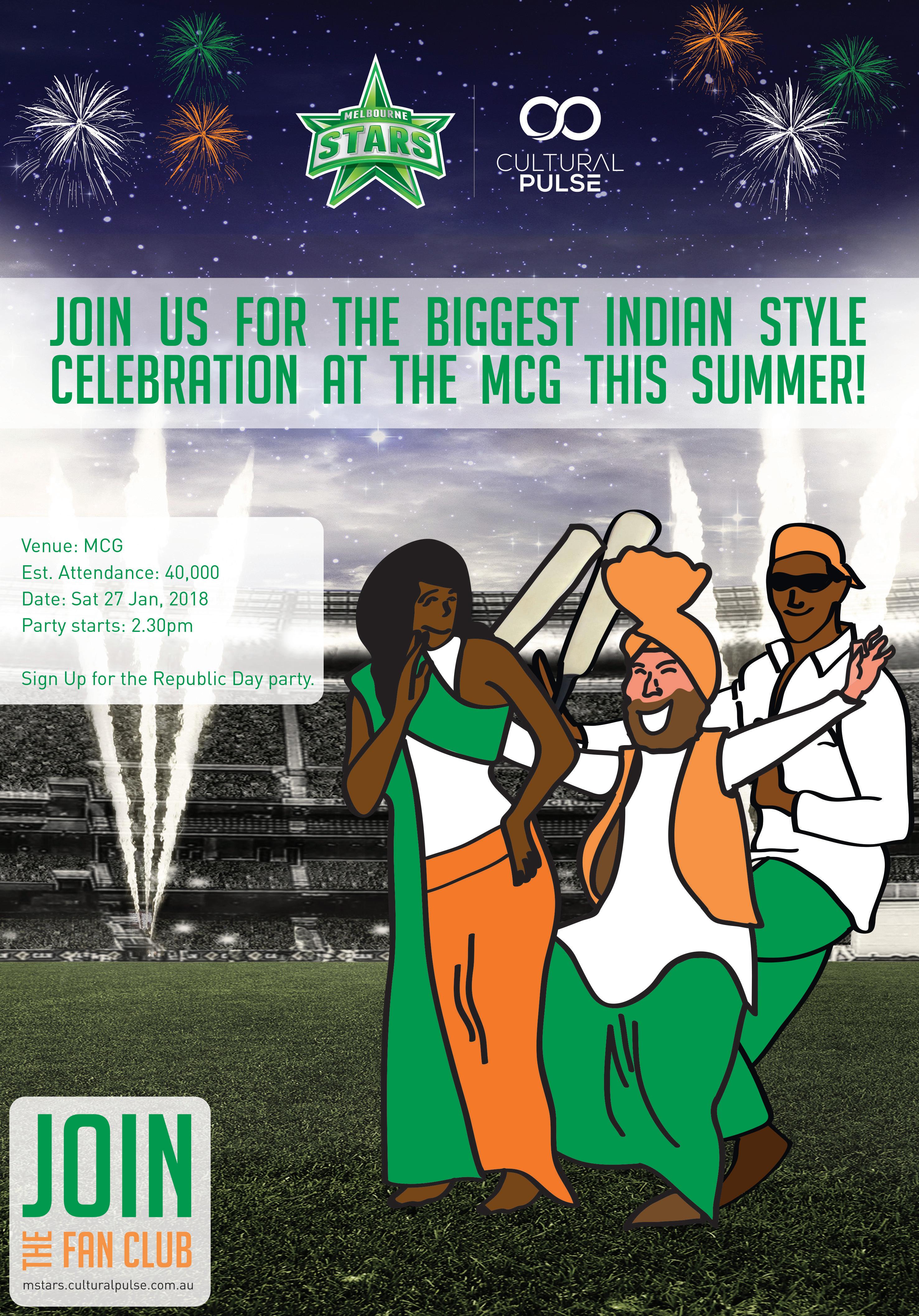
DECEMBER INDIAN LINK
























DECEMBER www.indianlink.com.au ^Available for new TPG Mobile services only. Free offer is for TPG Included Value plans (excl. Mobile PAYG). NBN: Min Charge includes $20 Prepayment + $10 Delivery. Available in NBN Ready for Service areas only. Prepayment automatically topped up if it falls below $10. Service barred if prepayment top up payment fails. Mobile S: Talk & Text Included Value is for use within AU and includes Calls, SMS & MMS to Standard Australian & International Numbers. Excess Data 10¢ per MB. Mobile M, L & XL: Unlimited National Talk & Text can be used for Calls & SMS to Standard Australian Numbers within AU. Excess Data $10 for extra 1GB blocks. 100 Minutes International Talk excludes calls to satellite phones. Mobile: Standard rates apply for excess and excluded usage types which are only possible with sufficient Prepaid Balance. General: Offers may be withdrawn. Plans are for residential customers only and not for commercial use. Visit website for full terms & conditions. 13 31 60 NBN Bundle Wi-Fi Modem UNLIMITED DATA + PHONE LINE MIN CHARGE $1109.82 $ 59 99 over 18 months MOBILE: NO LOCK-IN CONTRACT Unlimited National Talk & Text Unlimited National Talk & Text Unlimited National Talk & Text 100 minutes International Talk 100 minutes International Talk 100 minutes International Talk Small 1.5GB Large 9GB Extra Large 12GB Medium 4GB Talk & Text Charge after 3 Months Free Min Charge $0 Charge after 3 Months Free Min Charge $0 Charge after 3 Months Free Min Charge $0 Charge after 3 Months Free Min Charge $0 /mth 34 $ 99 /mth 39 $ 99 /mth 19$ 99 29 $ 99 /mth 550 $









DECEMBER INDIAN LINK 26th Dec-2017 to 2nd Jan-2018 ONCE A YEAR NOT TO BE MISSED ASHWOOD 382 Warrigal Road 9885 9932 DANDENONG 23 Pultney Street 9701 3165 PRESTON 258 High Street 9416 9011 St ALBANS 280 Main Road East 9366 4141 www.mks.net.au WE BEAT ANYONE'S PRICES MEGa BOXING day NEW YEAR SALE MEGa BOXING day NEW YEAR SALE

48 DECEMBER 2017 www.indianlink.com.au 17-02798 Sending money to India has never been easier Fast, reliable and convenient ways to send money from $3.50* $3.50 fee applies to sends to India up to $100. A higher consumer fee will be charged for send amounts which exceed $100. A currency exchange rate may also apply. MoneyGram also makes money from currency exchange. MoneyGram and the Globe are marks of MoneyGram. All other marks are the property of their respective owners. © 2017 MoneyGram. Toll Free: 1800 049 087 moneygram.com.au Send at: And anywhere you see the MoneyGram sign













































































































































































































































 BY HARSHAD PANDHARIPANDE
BY HARSHAD PANDHARIPANDE









 Carl Buhariwala
Carl Buhariwala



























































































 BY TARINI PURI
BY TARINI PURI



 BY PREETI JABBAL
BY PREETI JABBAL


 BY RITAM MITRA
BY RITAM MITRA
















 BY APARNA ANANTHUNI
BY APARNA ANANTHUNI
























 BY MINAL KHONA
BY MINAL KHONA


















































































































